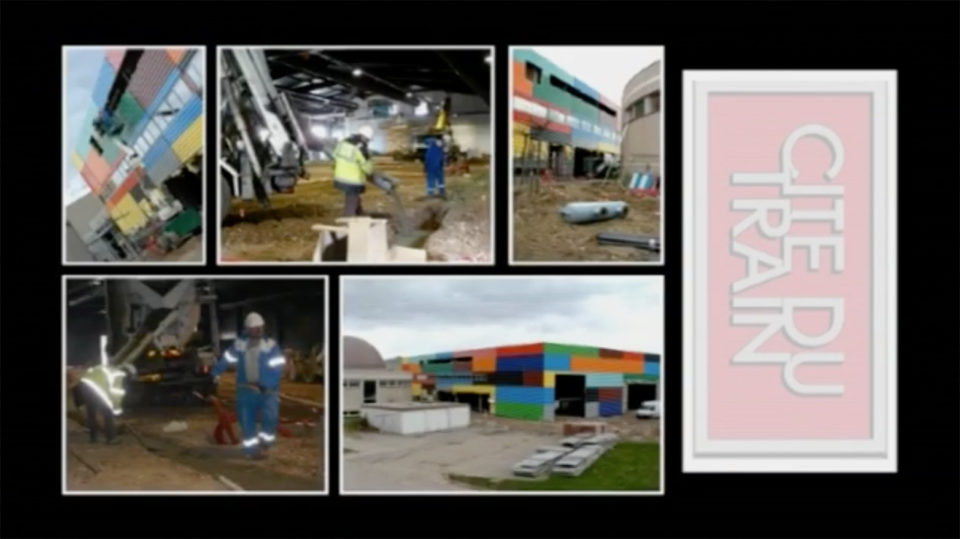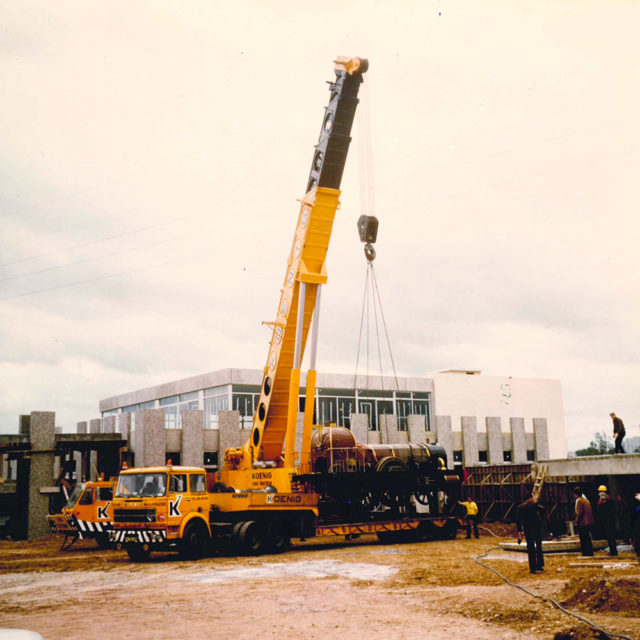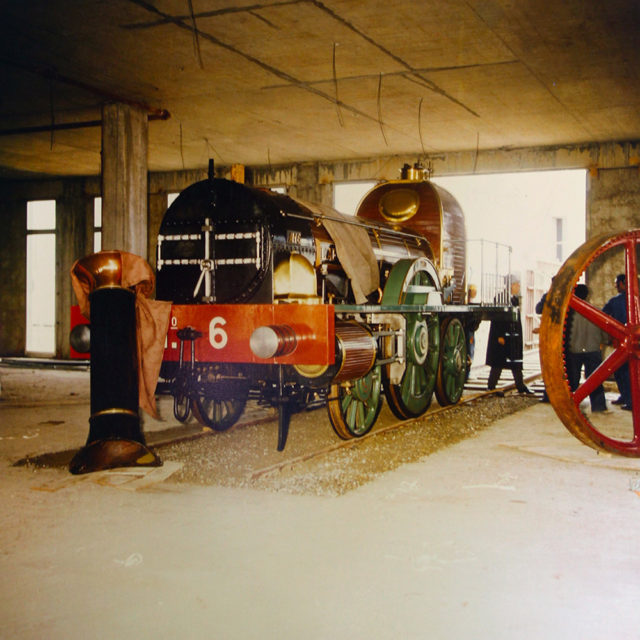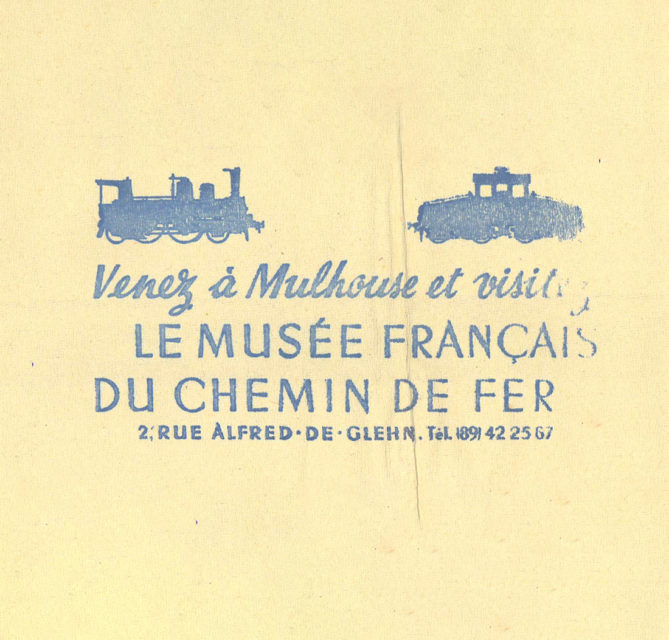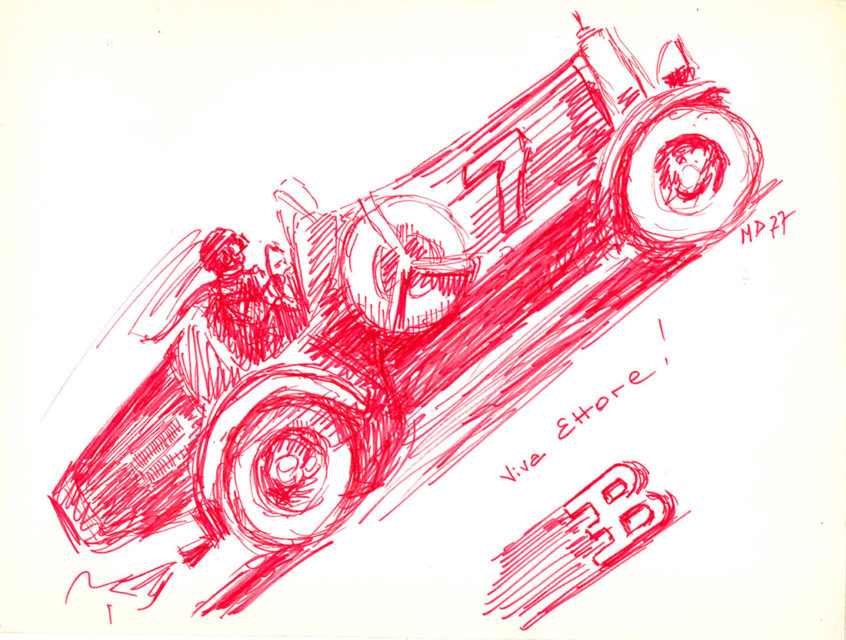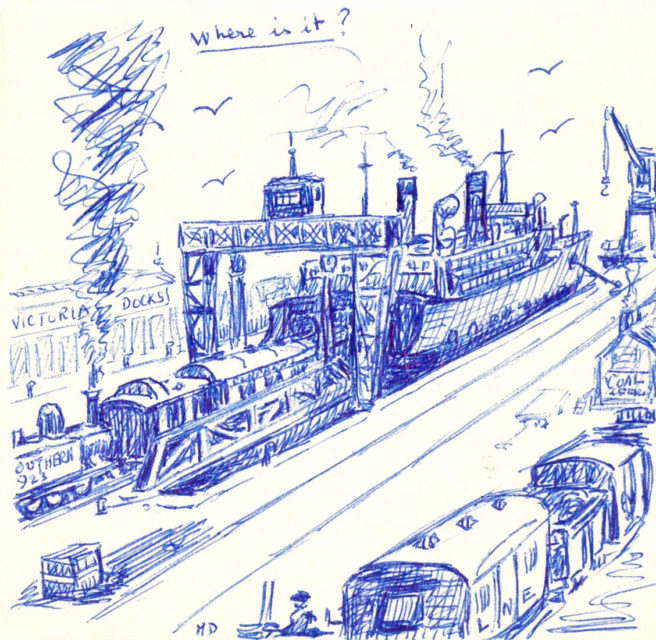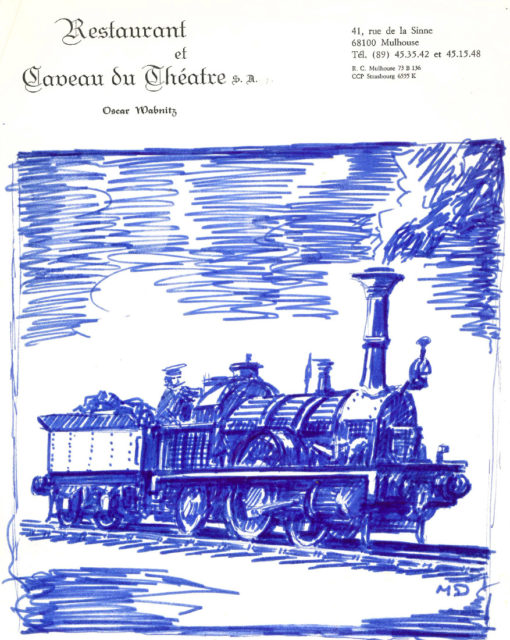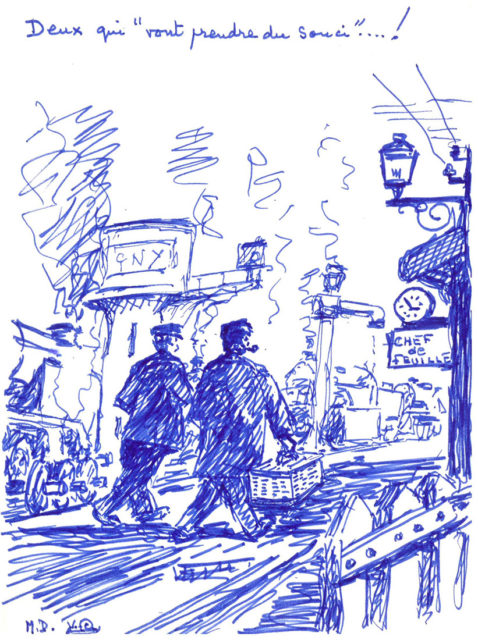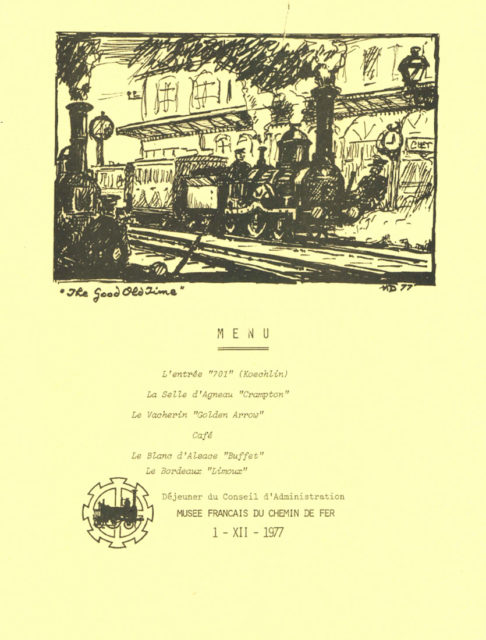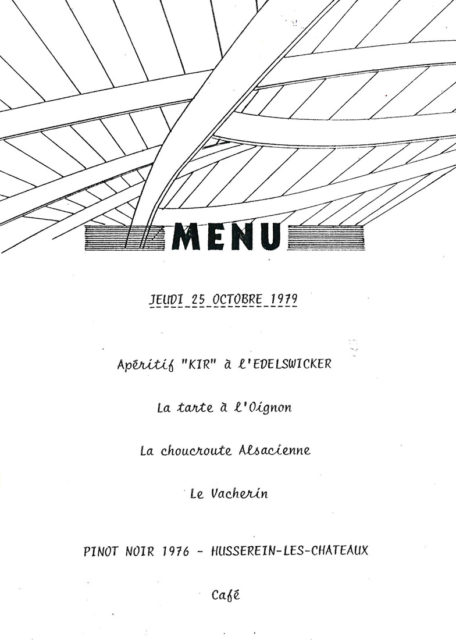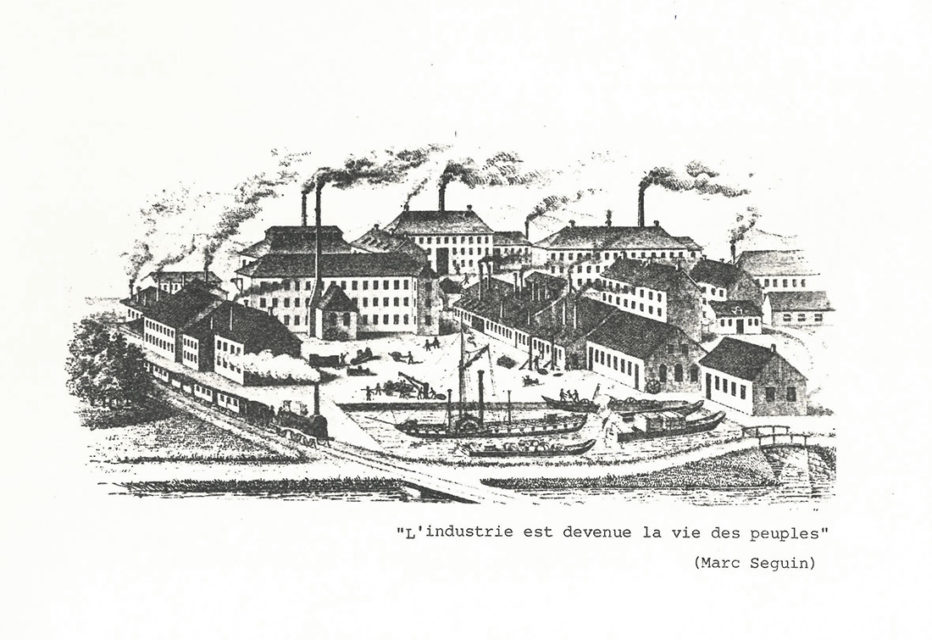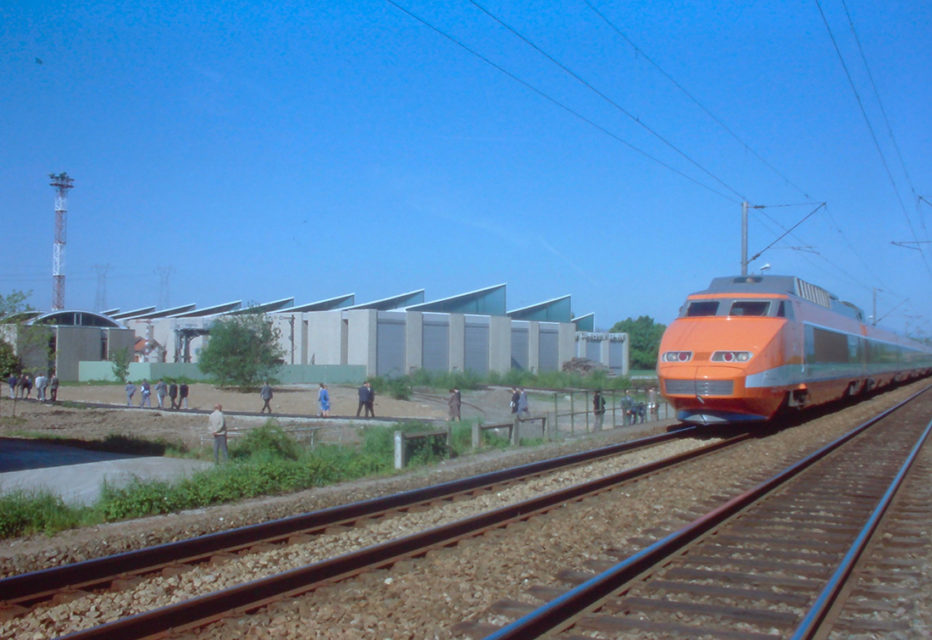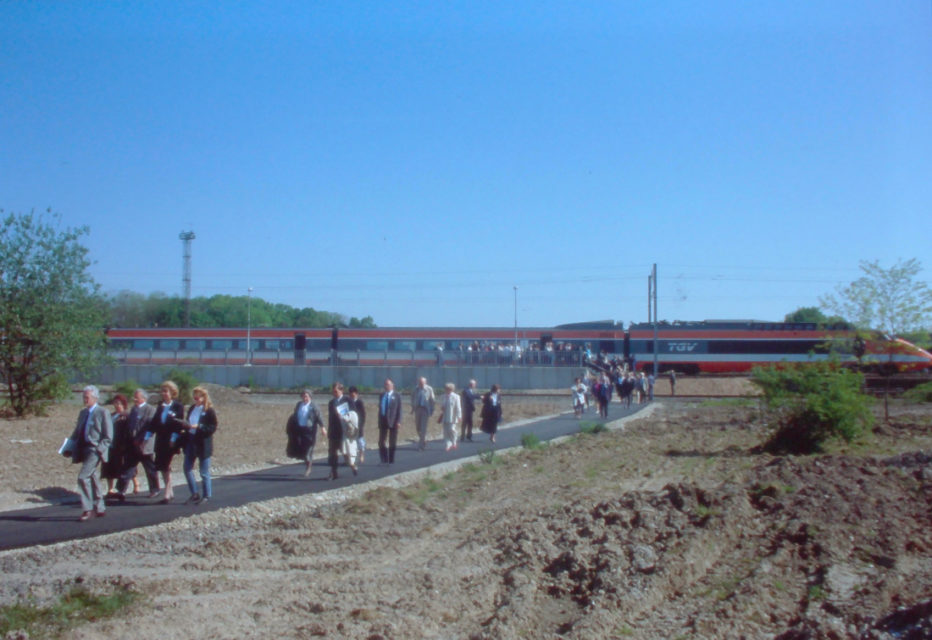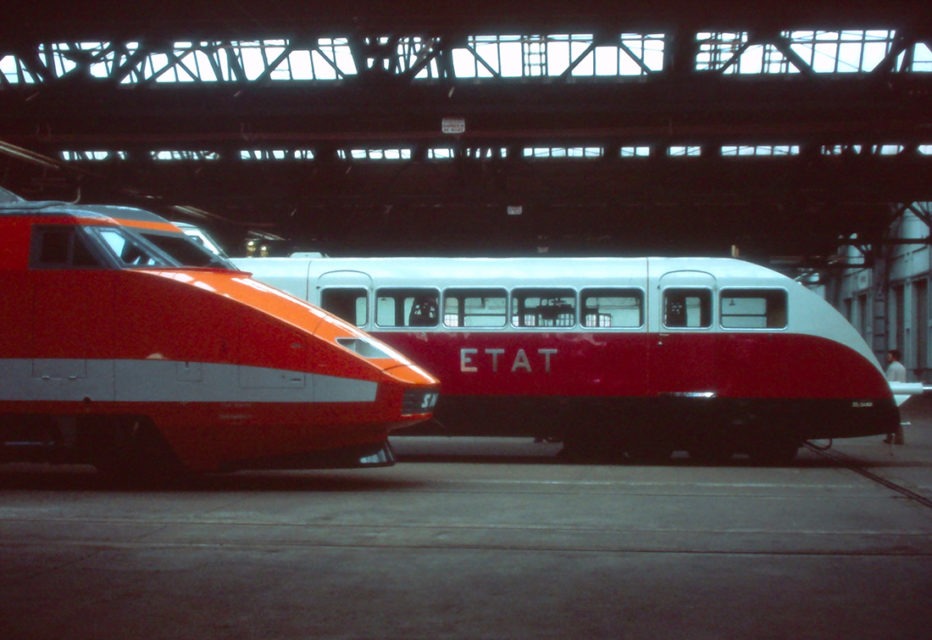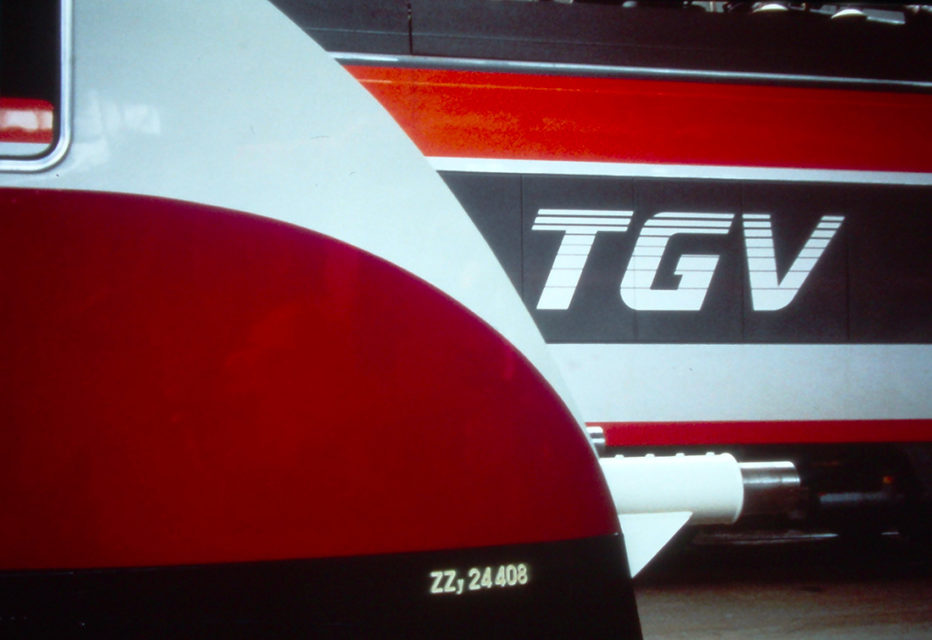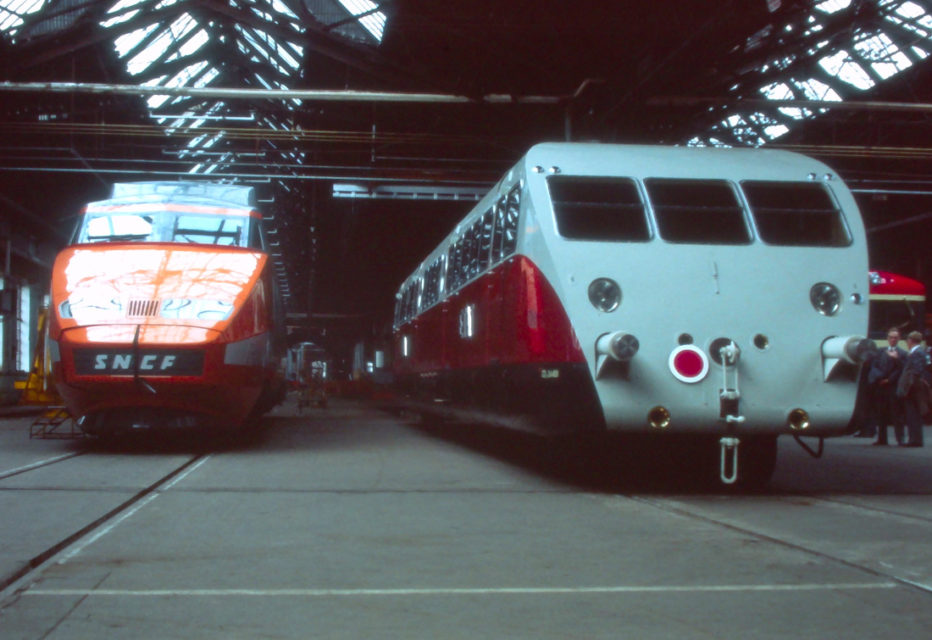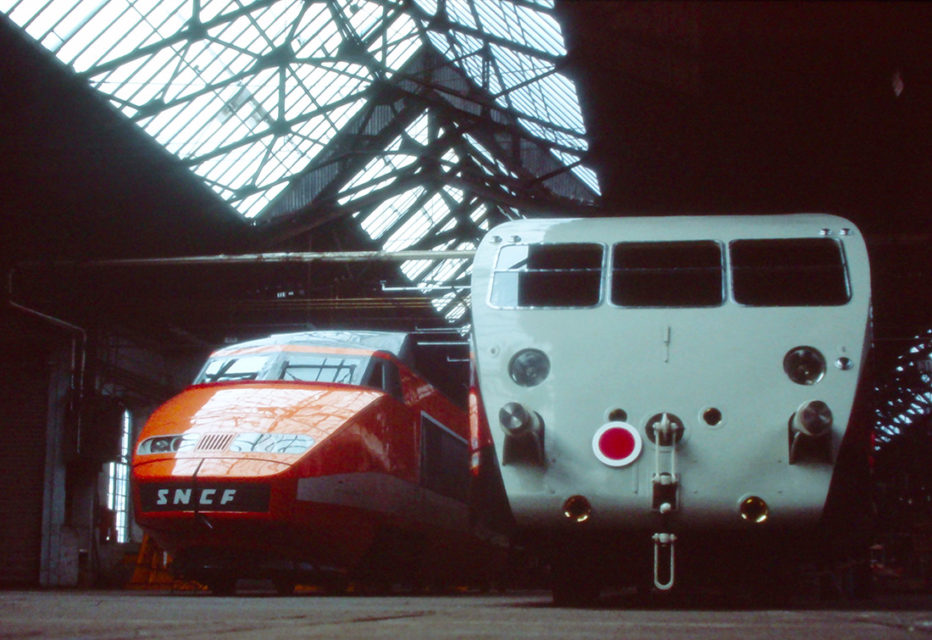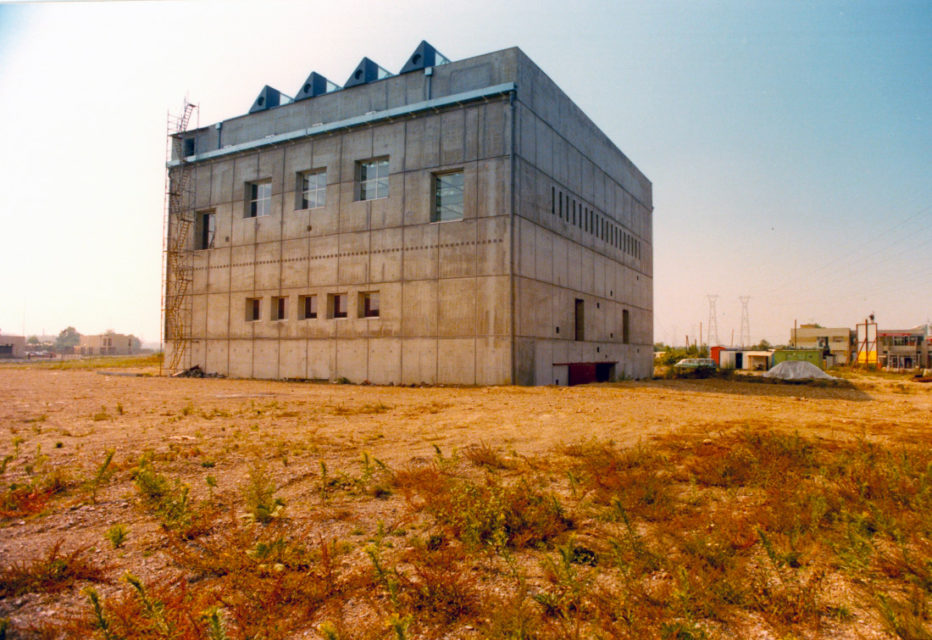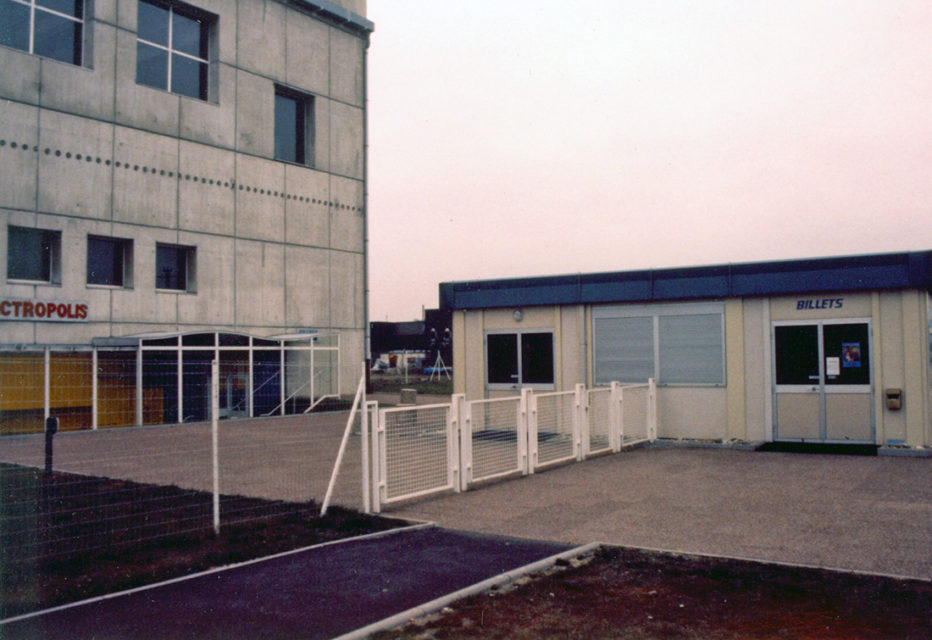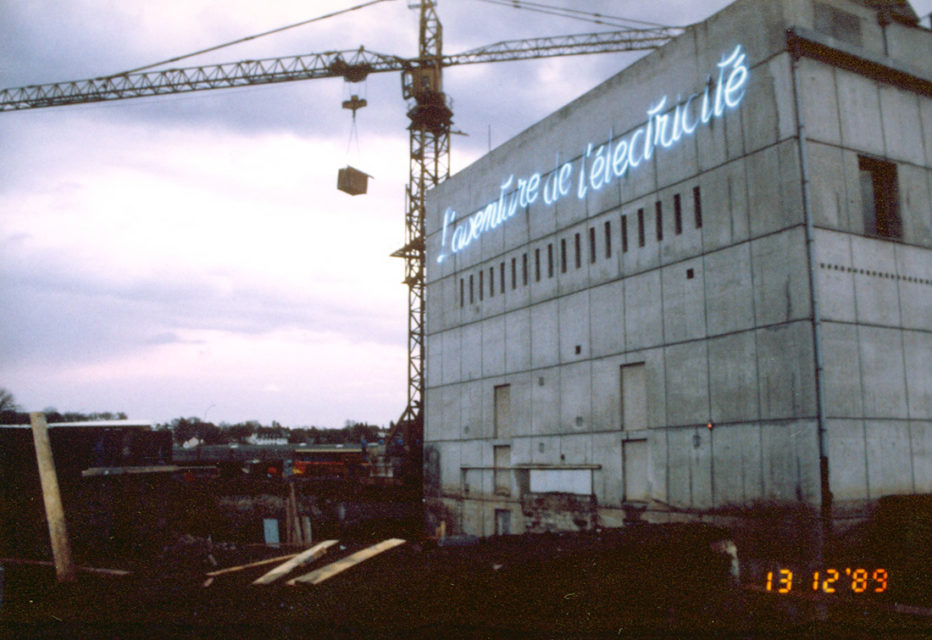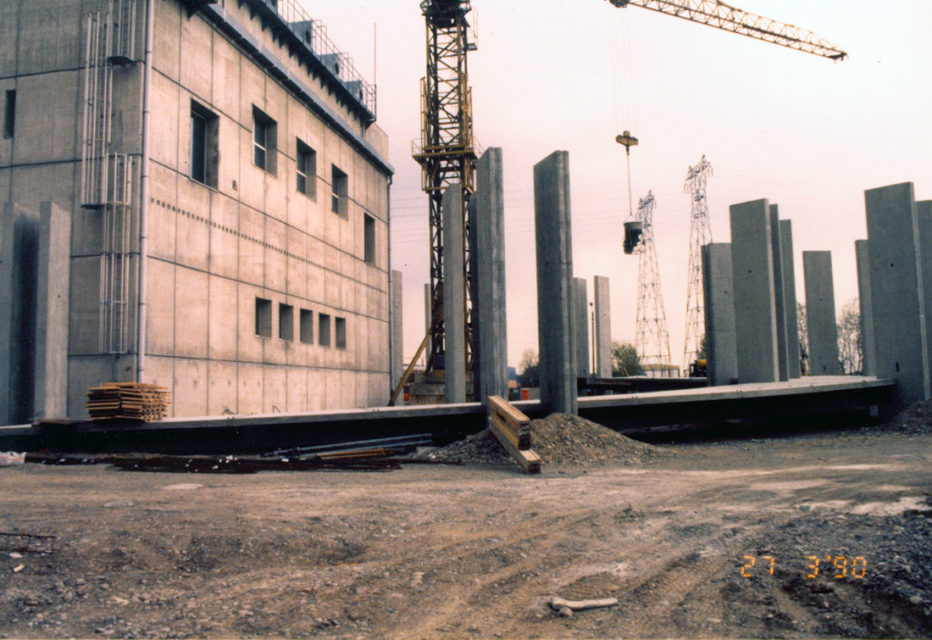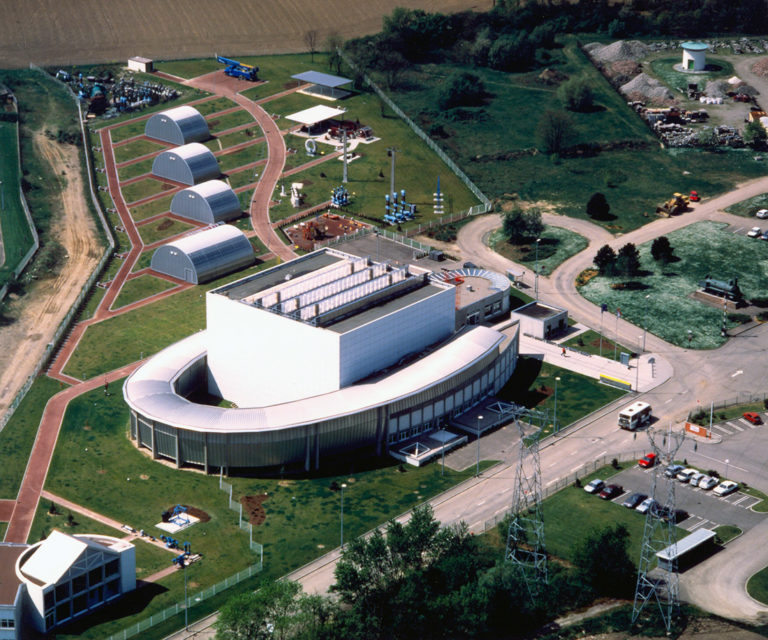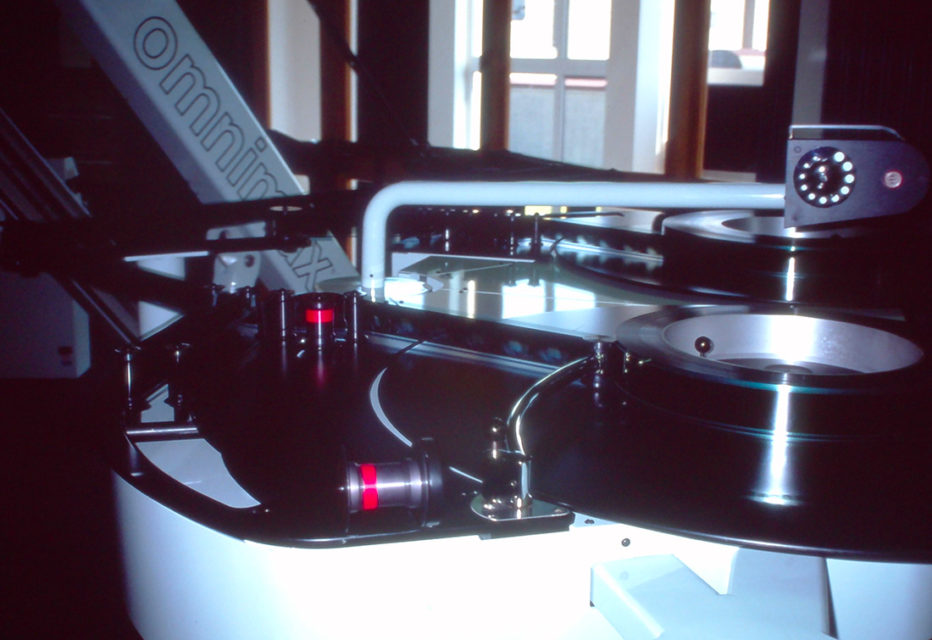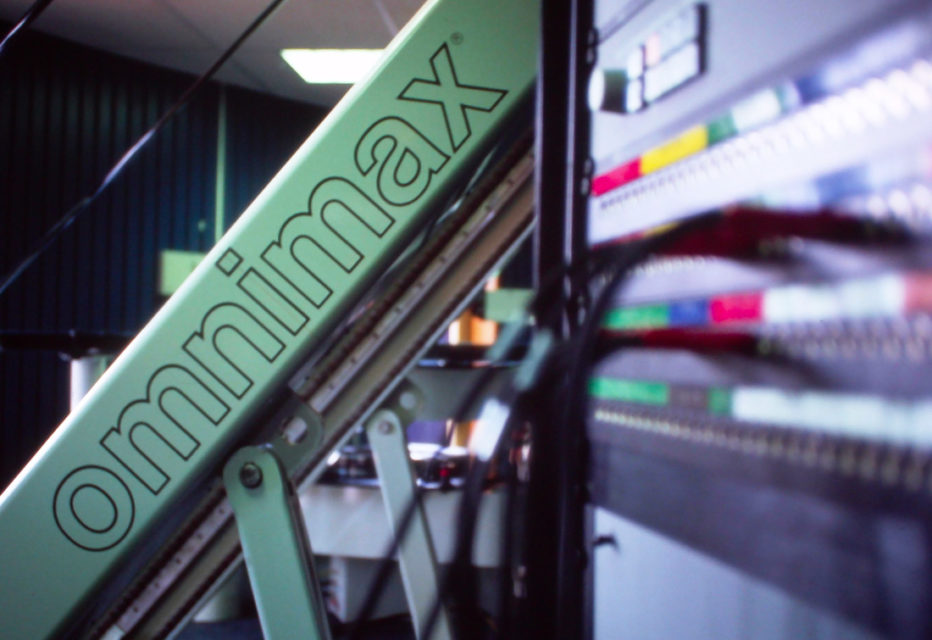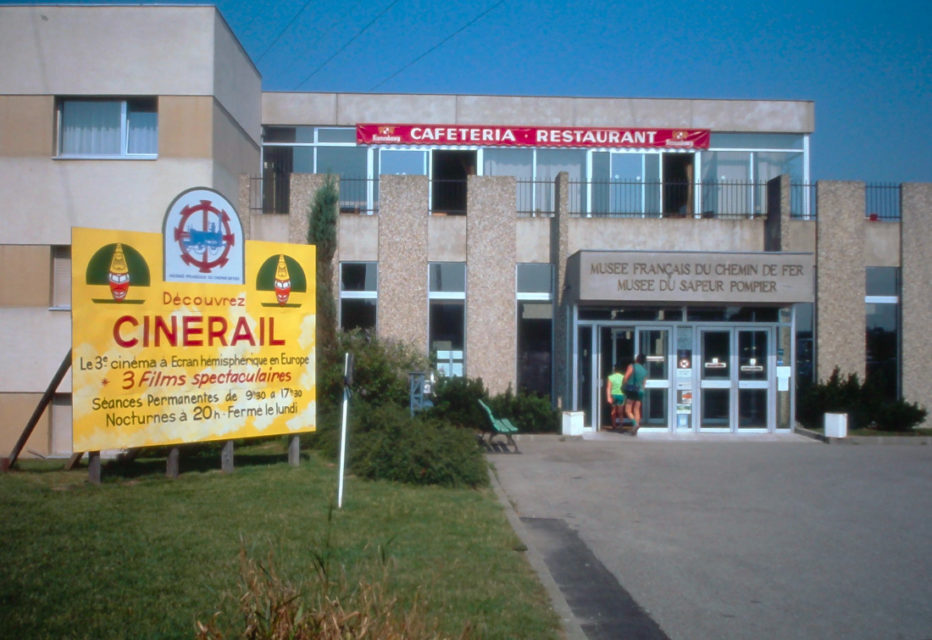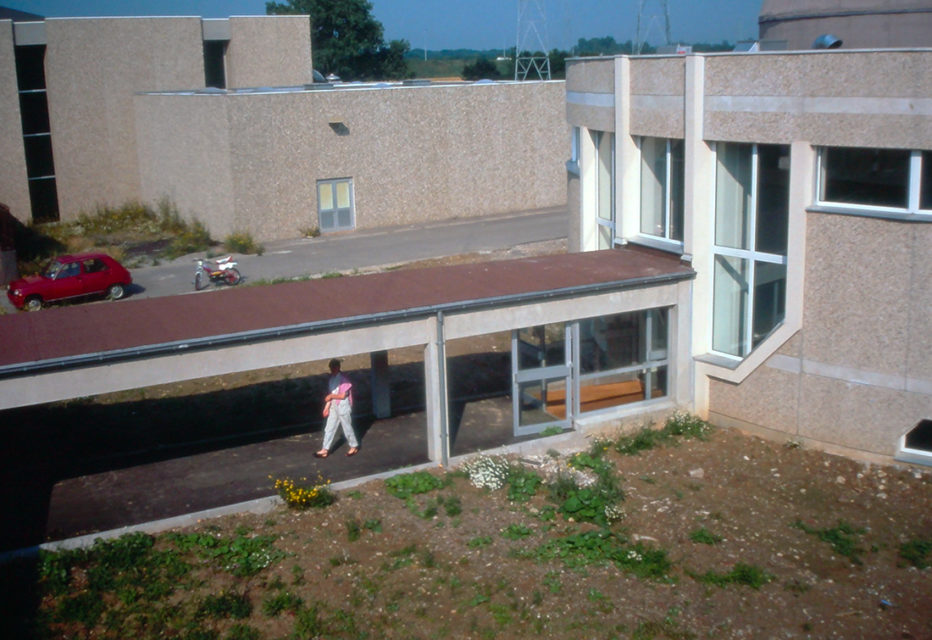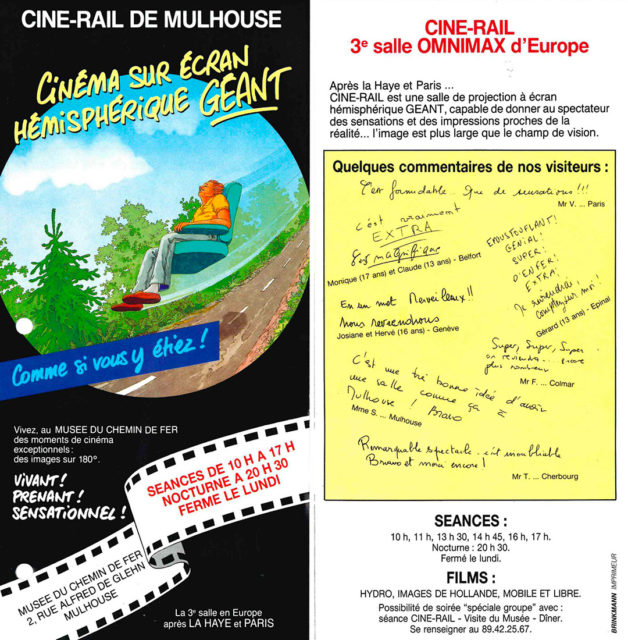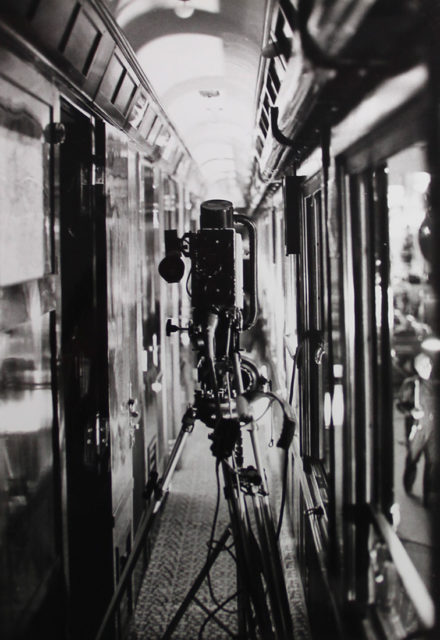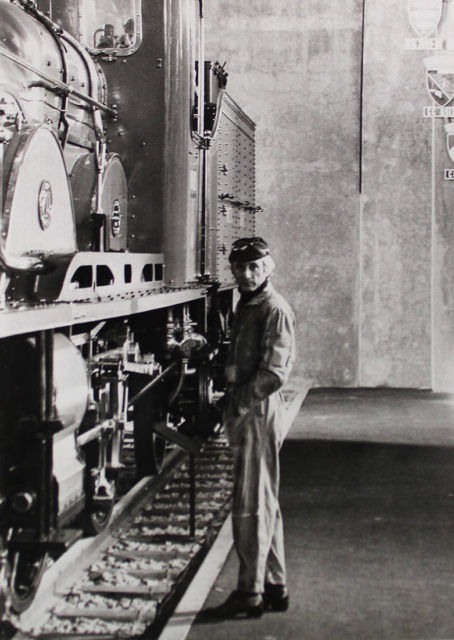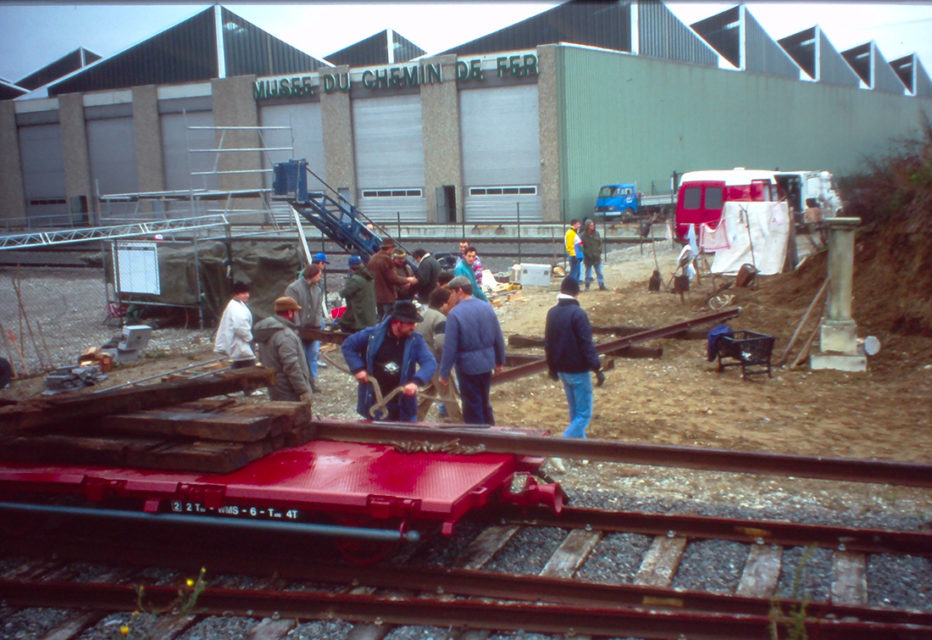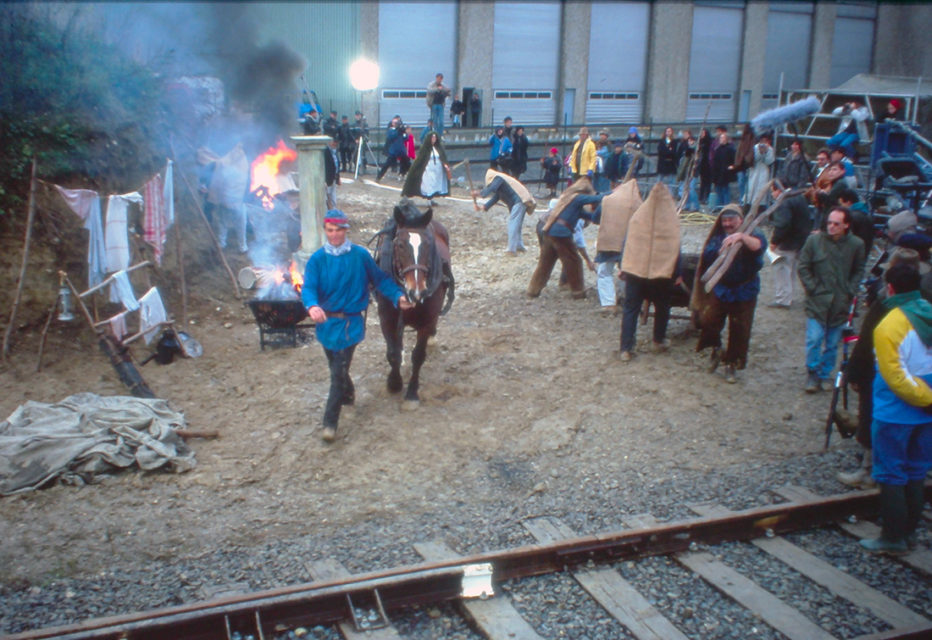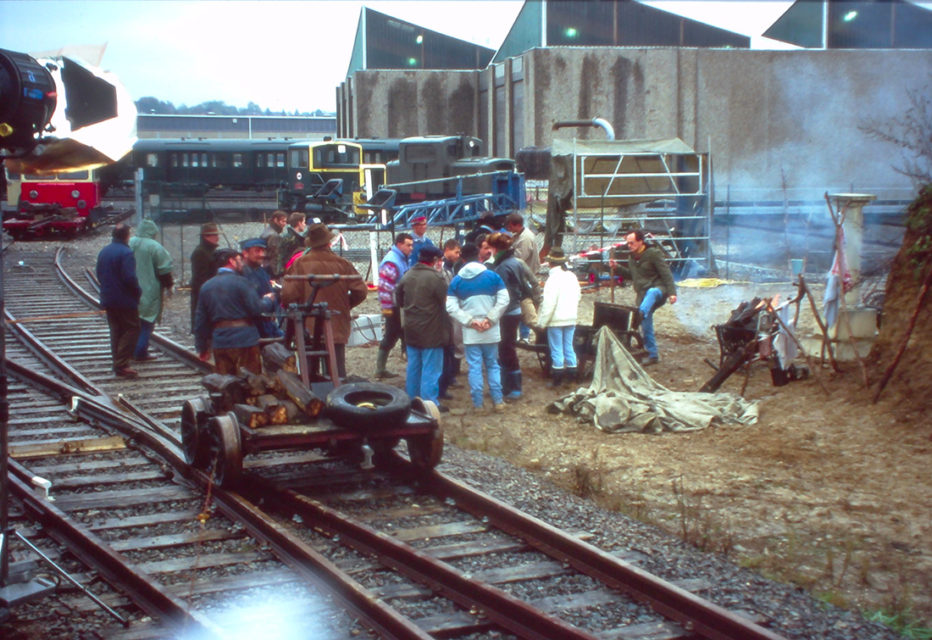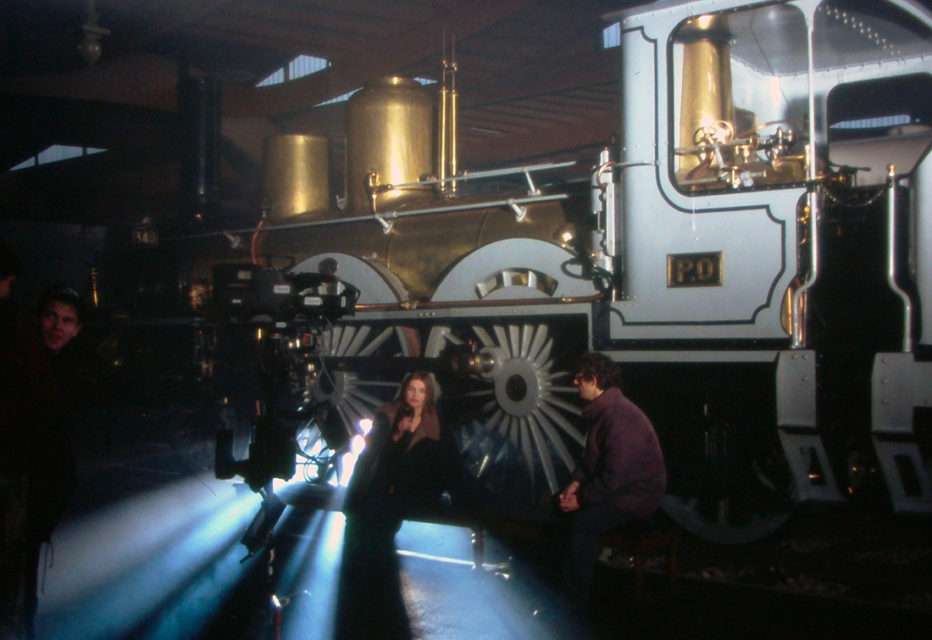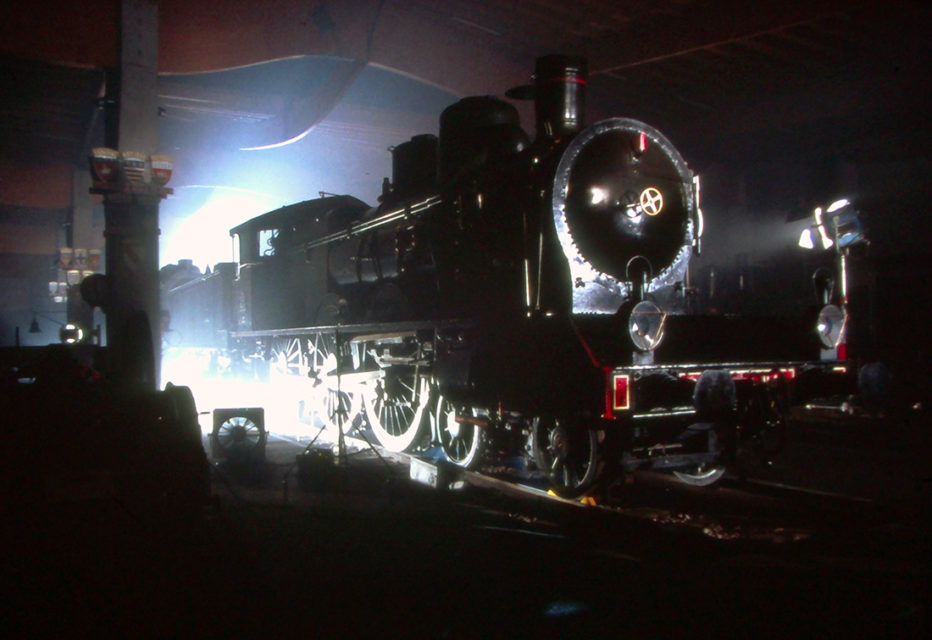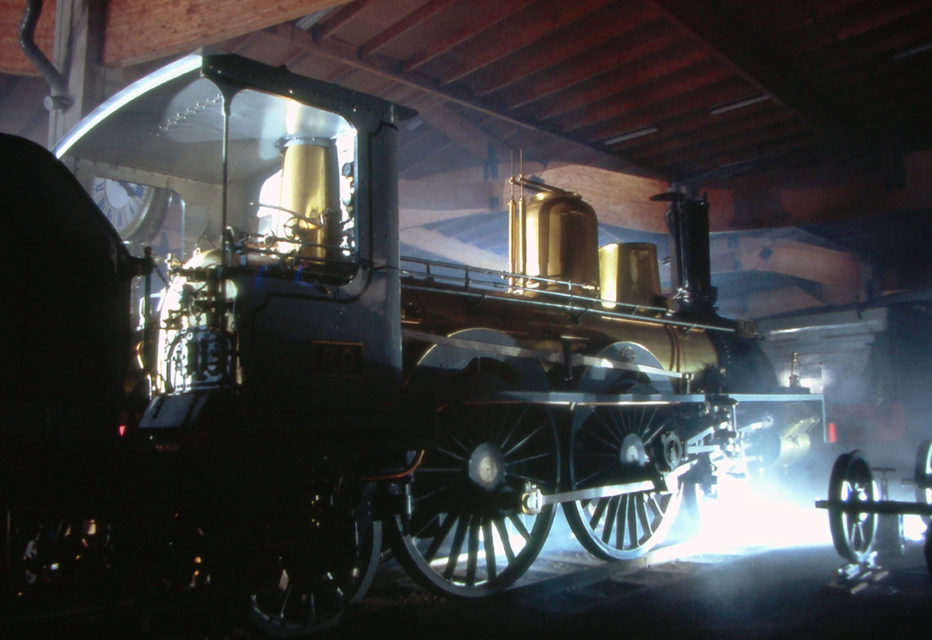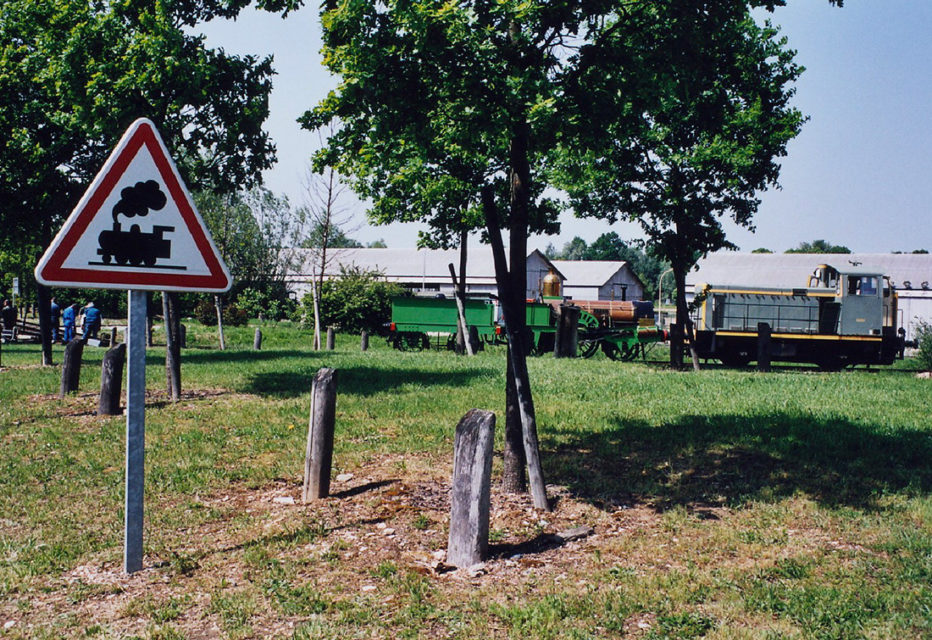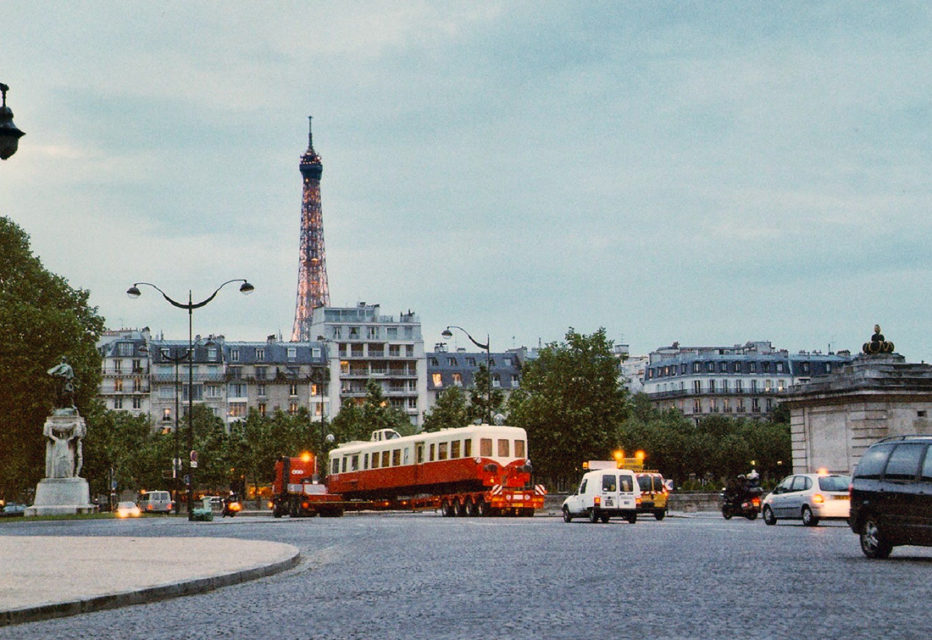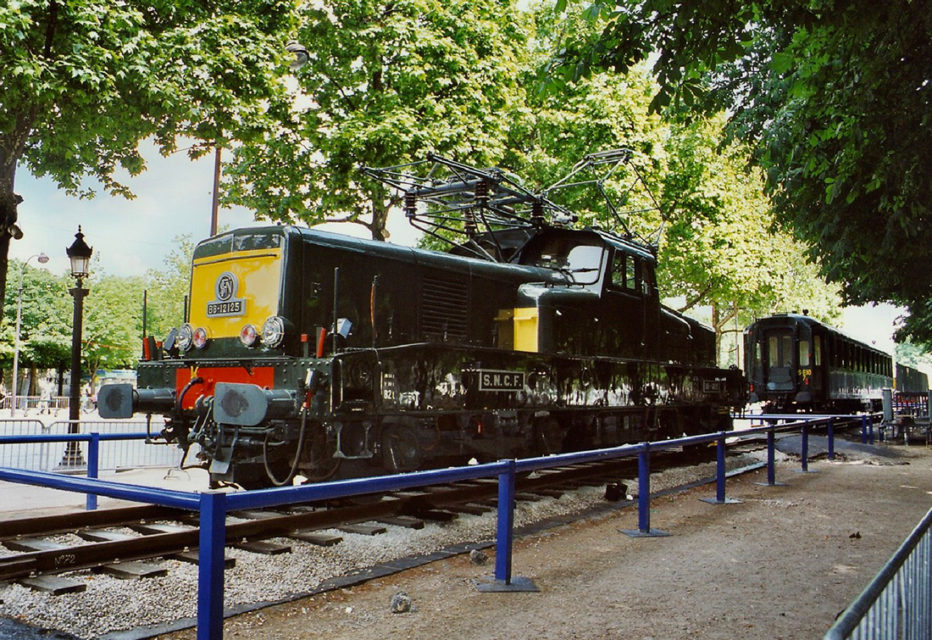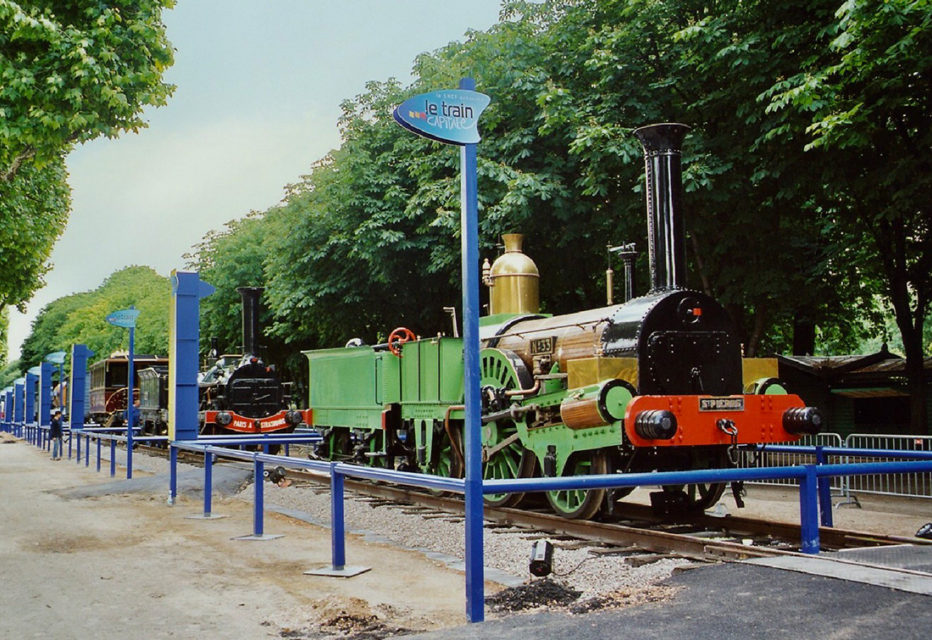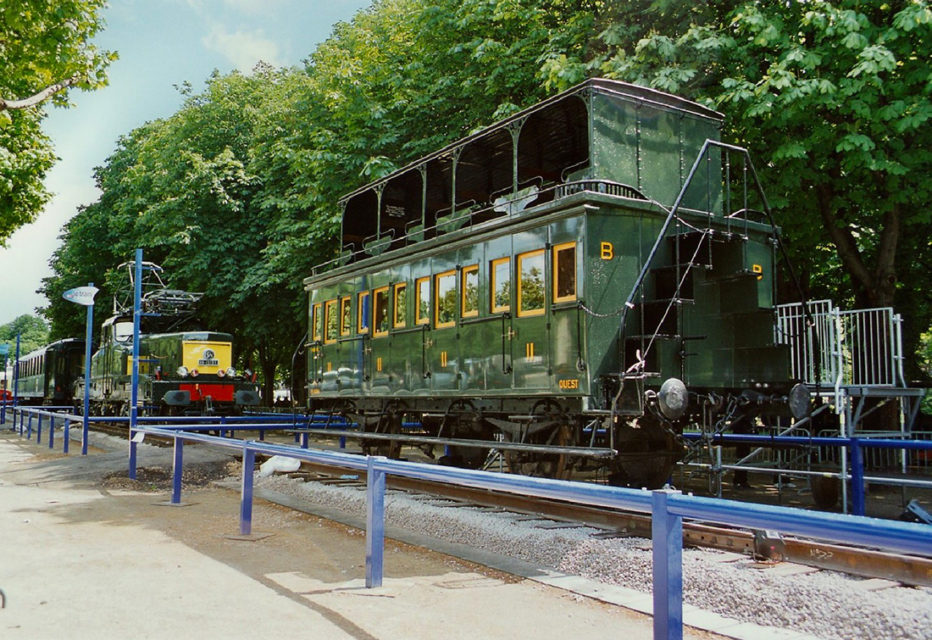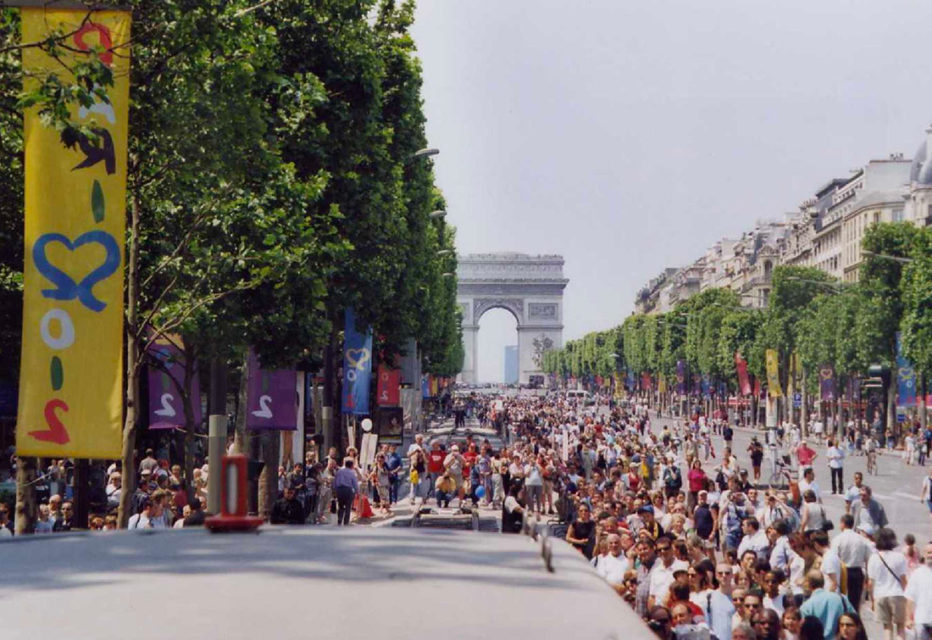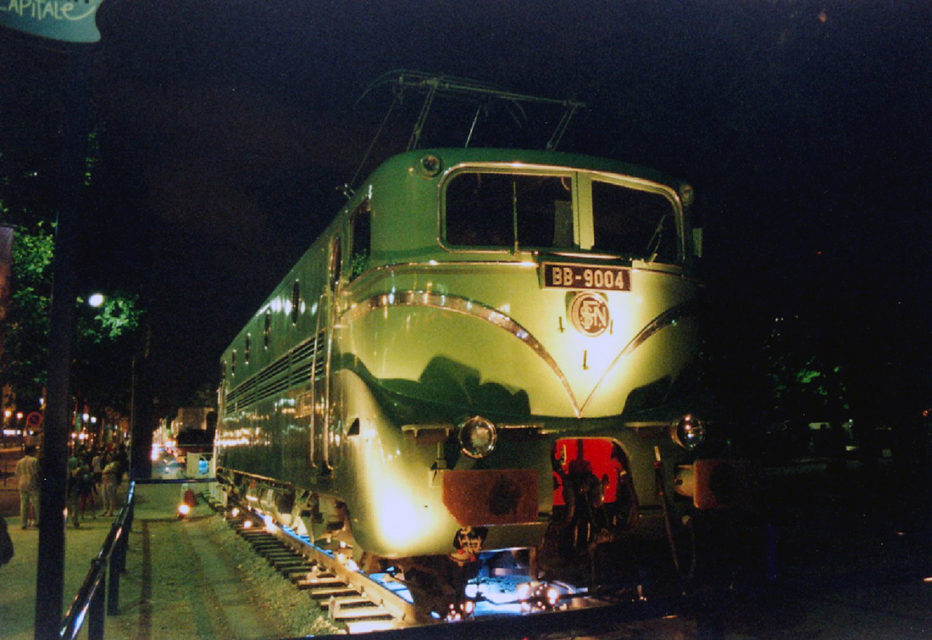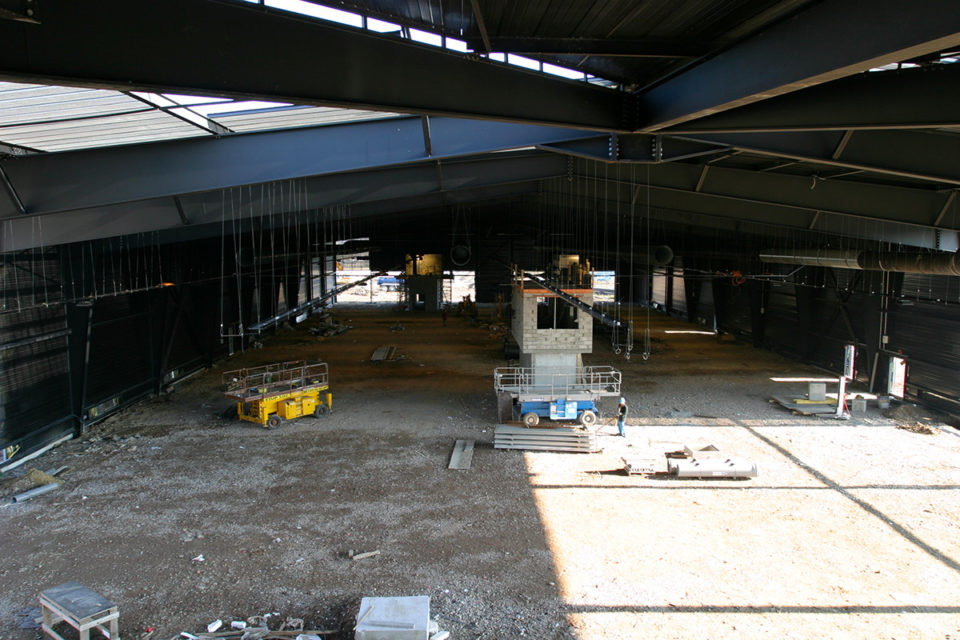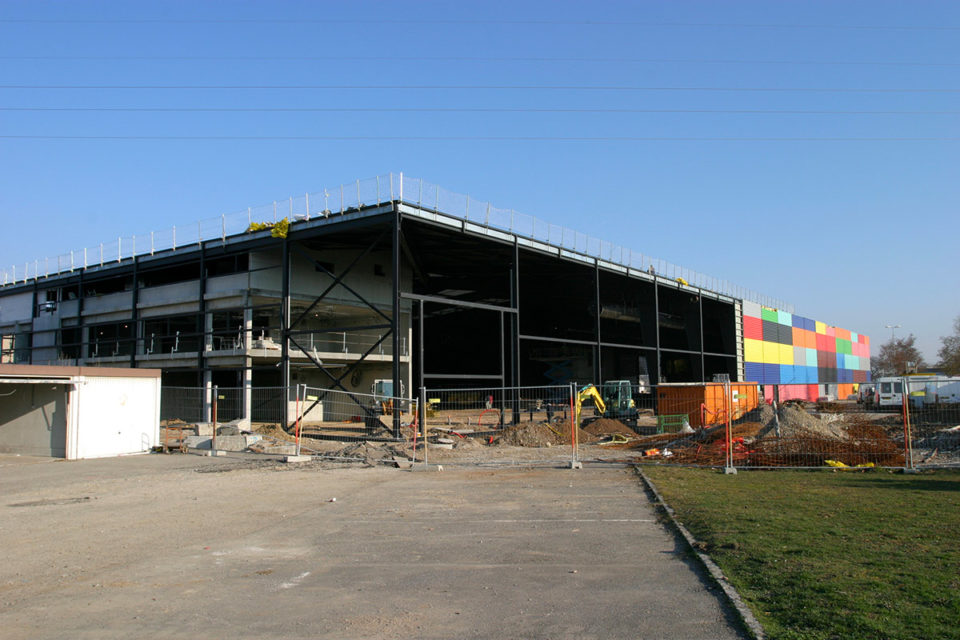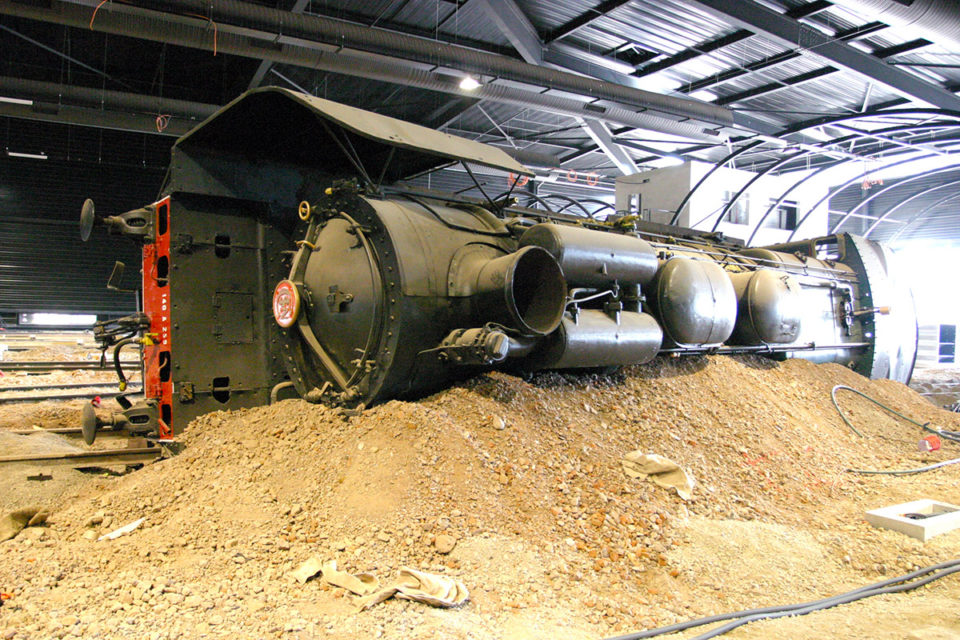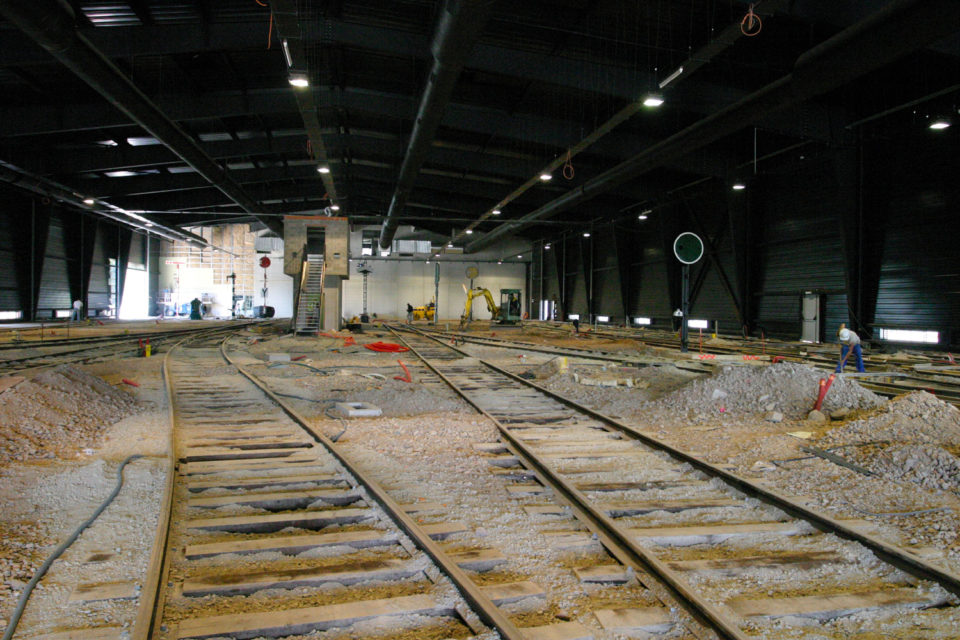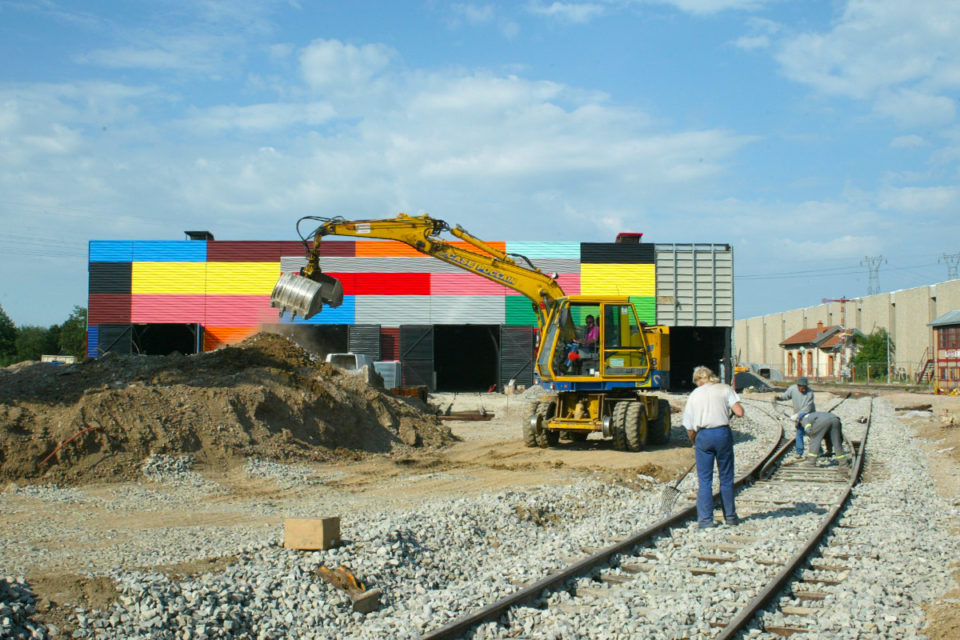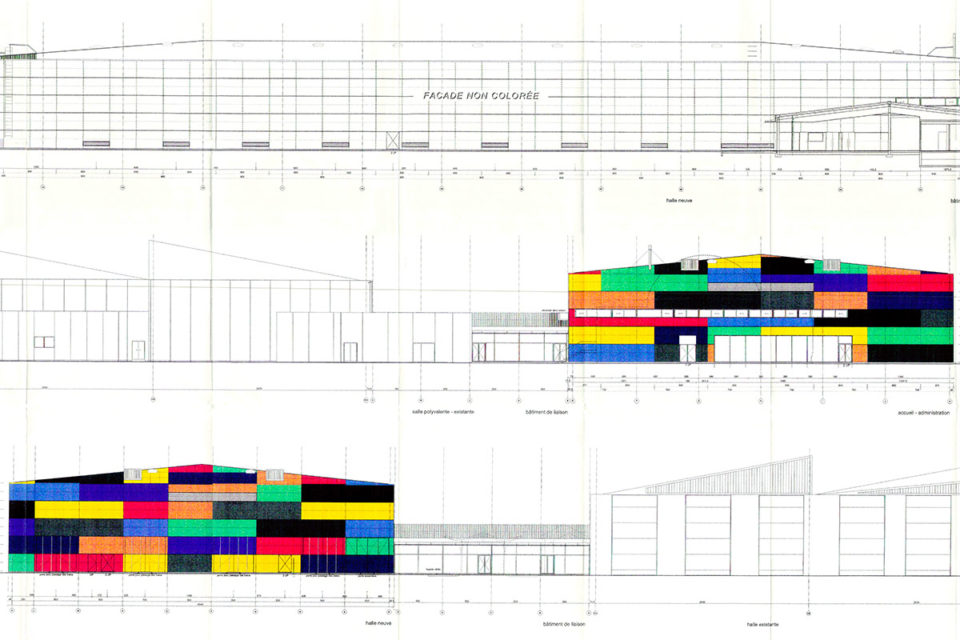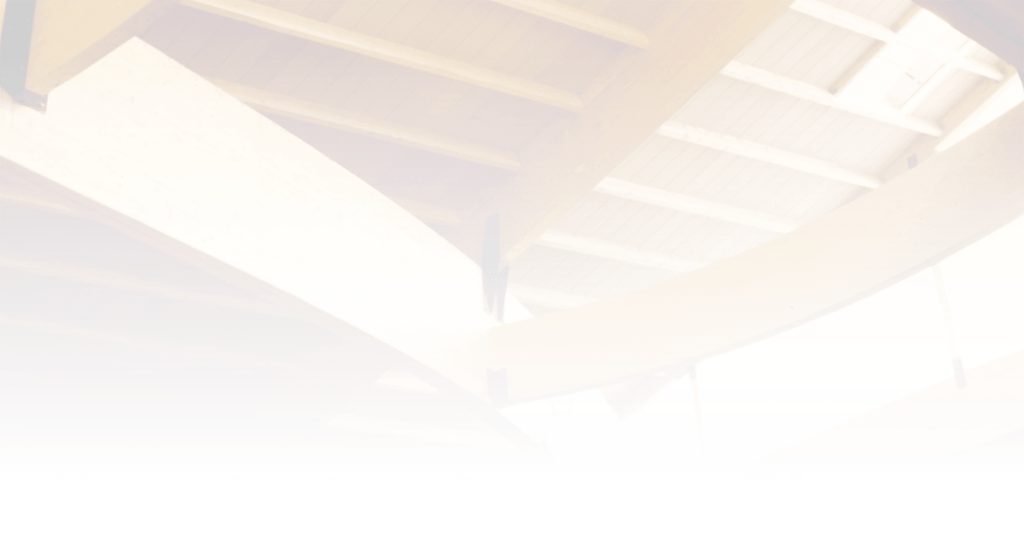
French Railways
Museum
From 1976 to 2005, the French Railways Museum boasted an extensive and diverse programme. Exhibitions, guided tours and development of educational action were some of the projects that marked the life of the establishment.
At the same time, the museum also became a photo shoot and filming location and concert venue. Thus, in 1978, an advertising insert imagined by Jean-Mathis Horrenberger at the time of the general elections claimed that the Museum was “Elected by all…”
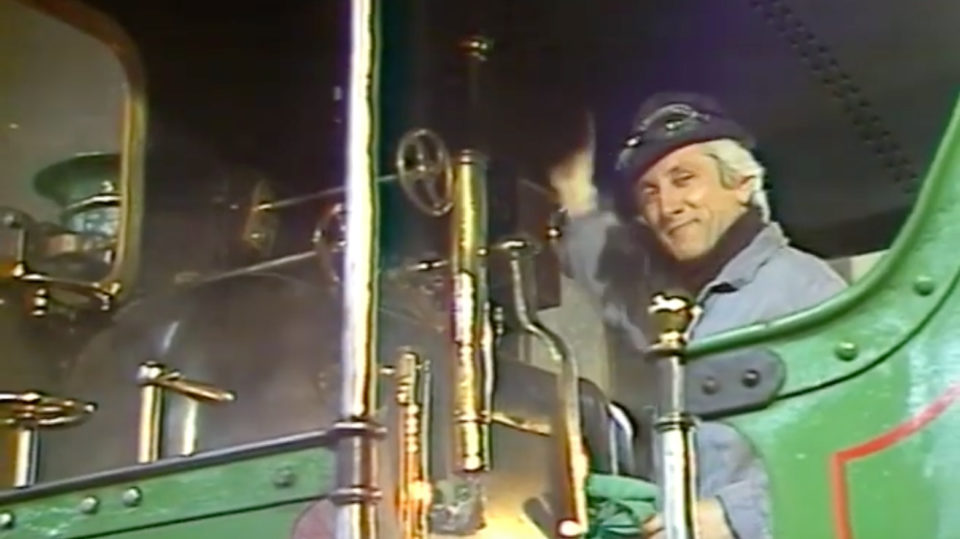
5 September 1980. It was the last holiday week-end for pupils in Amiens, Bordeaux and Poitiers, before their schools reopened on 9 September. In Alsace, as in other regions, schools would be closed for longer, and children had not yet prepared their bags. For the first time in France, the return to school was staggered. But that did not affect the television programmes marking the end of the summer!
Broadcast on France 3 National on 5 September 1980 at 9.30 pm, the musical En… Train claimed to offer “entertainment at the French Railways Museum in Mulhouse”. But this was not just yet another entertainment show; it was an original piece of television that was commented in the press. Costumes, dance routines, piano interludes and above all the presence of the artist Marcel Amont, who began by reminding viewers of his special relationship with the railways, turned the 52-minute show into a high point of the history of museum-related events.
18 May 1982. The French Railways Museum welcomed its millionth visitor. The lucky guest was received by Jean-Mathis Horrenberger and asked to sign the visitors’ book of the institution.
The final
museum
“We now have to finish the construction of building B, which will house a restaurant for 250, offices, a reception hall and the guard’s dwelling, and that of building C, designed for the Firefighters’ Museum. These two buildings will be complete at the end of the spring of 1977, which means that we can plan the official inauguration of the Technical Museums of Mulhouse Dornach for the following autumn.”
– Jean-Mathis Horrenberger, note on the year 1976 of the French Railways Museum, document stored at the Cité du Train
On 19 June 1976 at 10 am, almost five years to day since the opening of the temporary museum in Mulhouse North, the final museum opened its doors in Dornach. Five years were sufficient for restoring more machines, moving them, building the new building and publicising the French Railways Museum for the ever larger number of visitors. Looking back, the half roundhouse appears like a museum laboratory, where the collection, and more importantly its organisation, were tried out. While the last elements of rolling stock travelled to their final home, Jean-Mathis Horrenberger and Michel Doerr were preparing the inauguration, scheduled a few weeks later. In 1978, visitors looking at the locomotive 232 U 1 were startled by the sound track now in place, in sync with the movement of the coupling rods. The machine was ready to “start”.
From one station
to another
A few months after the opening of the Museum in its final site, Paris paid tribute to the railways. Bastille station, disused since 1984, was the venue of the first model train exhibition organised by SNCF. Behind the scenes, the company also helped promote the museum in Mulhouse. At the end of 1976, there was an early exchange of views between Michel Doerr and the external relations department of the railways operator. The planned project may appear surprising to us now. Passengers on major train lines were given several millions of crepe paper napkins decorated with a slogan promoting the museum. In 1977, the museum was however alerted: the napkins were “difficult to grasp” and would fall “accidentally”. Their folding design was revised, as were the dispensers. Anecdotal as it may seem, this episode is another reminder of the importance given to promoting the museum, including in stations across the land.
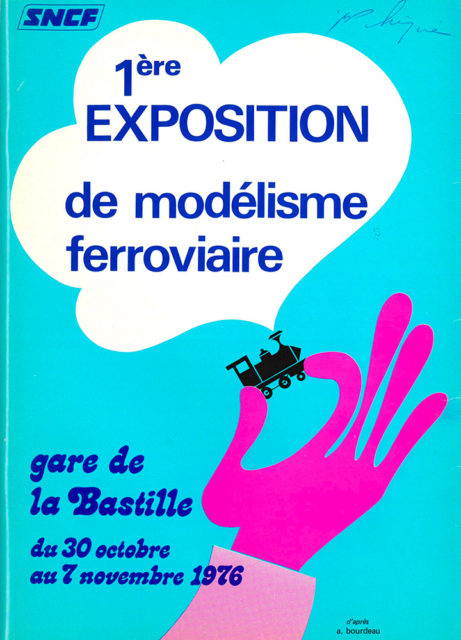
Artistic tablecloths
Advertising paper napkins are not the only objects to be found in the museum. Others, just as unexpected and unique, reveal a sensitive, enlightened and amusing world: that of the drawings on paper by Michel Doerr. As those who knew him personally were well aware, the author of Esthétique de la locomotive à vapeur (1971) was in the habit of doodling on white squares of paper, cloth and even tablecloths of hotels and restaurants. The drawings, always signed MD, showed station masters, boats, cars, and above all the passion of the first director for British railways. Some of his sketches were used to illustrate the official menus of seminars and board meetings. Saddle of lamb Crampton and Vacherin Golden Arrow were thus some of the dishes that delighted railways enthusiasts.
The Grand-Duke
of Luxembourg
On 20 November 1980, the French Railways Museum received a visit by the Grand-Duke of Luxembourg. In the salon carriage no 10 AL, called the “Grand-Duchess”, Jean of Luxembourg signed the visitors’ book of the museum in the presence of political figures from Luxembourg and France. In his memoirs, Jean-Mathis Horrenberger pointed out that this was the first time the Museum received a current Chief of State. At the end of the day, the Grand-Duke boarded a TGV along with Jacques Pélissier, Chairman of SNCF. The high-speed train was being trialled between Mulhouse and Strasbourg.
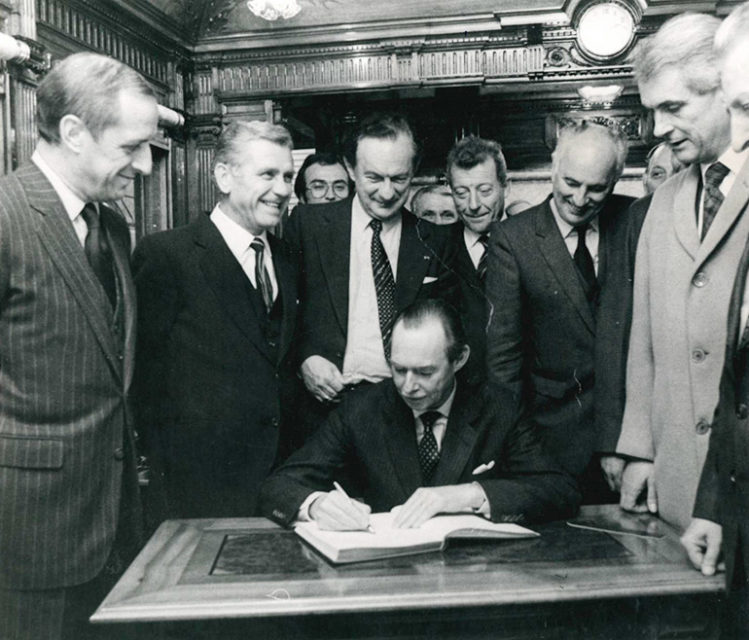
Bugatti
and the TGV
A small box containing slides. And on those transparent slides, two pieces of equipment of legend: the TGV and the Bugatti railcar. In the background, the workshop in Bischheim. The year was 1981. It was the second anniversary of the French Railways Museum, and also the inauguration of the TGV and the centenary of the birth of Ettore Bugatti.
That French-Italian sculptor was one of the greatest manufacturers of his time. In 1909, after experience gained principally at De Dietrich, he set up his automobile plant in Molsheim, a town located to the southwest of Strasbourg. While the Royale was the icon of his industry, Bugatti was also very interested in the railways.
The presidential railcar, which stepped off the production lines in 1933, is a sign of that interest. It was operated by SNCF till 1953, become a rolling laboratory until 1975 and was then selected to join the collection of the French Railways Museum.
After restoration work in the workshop of Bischheim, its carmine livery blended with TGV orange. That marriage of colours and forms, amplified by the granular appearance of the slides, in itself symbolises the development of design over the 20th century.
A presidential
helicopter
30 September 1982. In the late afternoon, a helicopter landed near the French Railways Museum. A few minutes later, after a brief exchange with representatives from the graphics arts firms of the area, its passenger went through the doors of the museum: it was President François Mitterrand. Accompanied by Charles Fieterman, Minister for Transport, and Jack Lang, Minister for Culture, the man who inaugurated the Paris-Lyon TGV a year earlier discovered the collection. A telephone connection with the Elysée palace, an inspection of the museum by security, the setting up of a medical station, the visit required flawless organisation, which Jean-Mathis Horrenberger remembered 15 years after the event.
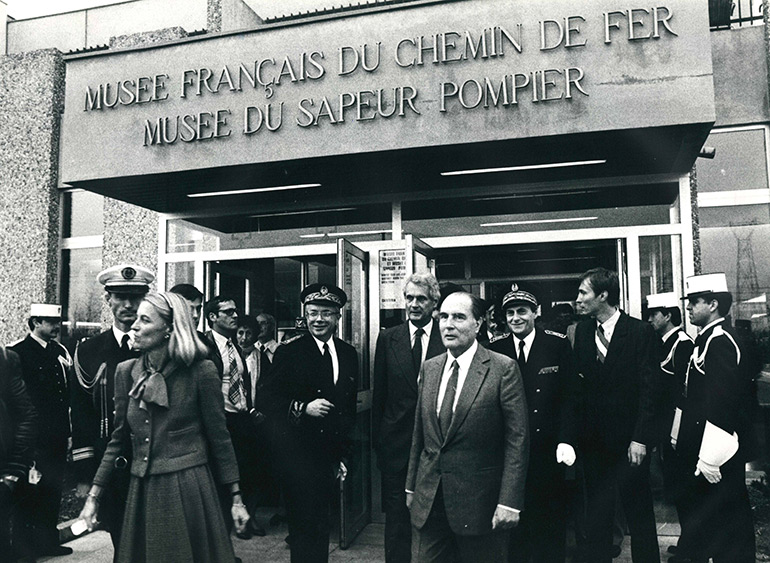
“The path taken by the President during his tour of the Museum was defined almost to the metre, and I was to stick to it – which did not stop Mr Mitterrand, three days later, to take me twice by the arm and ask me to allow him a closer view of a locomotive that seemed to bring up childhood memories!”
– Jean-Mathis Horrenberger in Le Musée du Chemin de Fer : une utopie devenue réalité, 1997
A period room
station
From the earliest days of the museum, Michel Doerr defended the idea that railways are a complex system that needed to be treated as a whole. Between buildings A (rolling stock), B (reception, offices and restaurant) and C (firefighters’ museum), the outside area welcomed a collection dedicated to infrastructure. So it was that in 1982, the idea of a small station was proposed. It was created out of nothing, to reconstruct the office of a station master and show visitors the atmosphere of a small station. In the museum, engines made by the SACM, decorative arts, fine arts and models, such as the Vitry test bench, now completed the display.
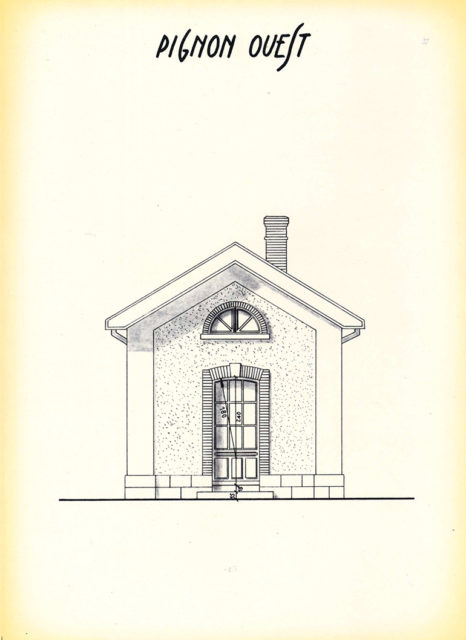
The electric cube
1983 was a good year for the French Railways Museum. Over those 12 months, the organisation experienced a historic peak of visitors, totalling 239,807 people. At the same time, the museum was given the Prestige de France award. It was the first museum in the provinces to achieve that distinction, to the joy of its founders Jean-Mathis Horrenberger and Michel Doerr, who was about to resign from his position as Director.
“[…] you promoted the idea, brought together all the goodwill, drove the convergence of efforts, then after becoming the Director of the museum in gestation, you defined the floor plan and specified the details. One wonders from where you derive the power to turn a childhood dream into a reality admired by over a million visitors.”
– Award to Michel Doerr of the decoration of the Légion d’honneur, speech by André Portefaix at the ceremony of 19 October 1983
In the autumn of my life and in line with philosophy, I ask him [Jean Renaud, future director, editor’s note] to meditate this first Hippocratic aphorism:
– ars longa, vita brevis – which could be perfectly transposed from medical science to the archaeology of the railways; for it was you, my dear Engineer General, who helped us save those who needed saving, if only the famous salon for Aides-de-Camp. Thank you!
– Reply from Michel Doerr to André Portefaix
From the office windows, the decorated team carefully watched the comings and goings of cranes and trucks. A new building was emerging on Rue du Pâturage. This was the centre of energy, which would become Electropolis. Five years after the saving of the Sulzer-BBC machine of the company DMC, the outer walls of the cube were being erected. The EDF museum, designed by the architects Morin and Fanuele, opened in 1987 and inaugurated in 1992, set out to display the epic of electricity. The institution is developing all the time, and offers a space dedicated to innovation since 2018. A rotor from the nuclear power station of Fessenheim, which arrived in the night from 6 to 7 April 2021, stands proudly at the centre of the electric garden. This 153-tonne object is the latest large acquisition of the partner museum.
A museum with
appetite
From 1976 to 1984, the collection grew continuously and visitors got an opportunity to attend the arrival of the steam locomotive 032 Engerth no 312 L’Adour (in 1978), the locomotive Ten Wheel (in 1978) and the electric car Sprague BDF 9011 (in 1979). In a note of 1979, Michel Doerr remarked that Mulhouse has a “large appetite”. That could only mean one thing: the building needed to be extended. That decision had in fact been approved in 1978 by the board of directors on 19 December. Once again, the architect Pierre-Yves Schoen was commissioned to help the museum in its projects.
On 15 May 1984, a special train was chartered for the public opening ceremony of the second part of the works. Inside the museum, now covering almost twice its initial area, known figures could be seen. They included René Clément, maker of the famous film La Bataille du Rail, Bernard Lemoine, President of the Prestige de France committee, and André Chadeau, Chairman of SNCF. The last of these was certain that the TGV would soon have a place in the establishment. And he was right: the TGV did come to the museum.
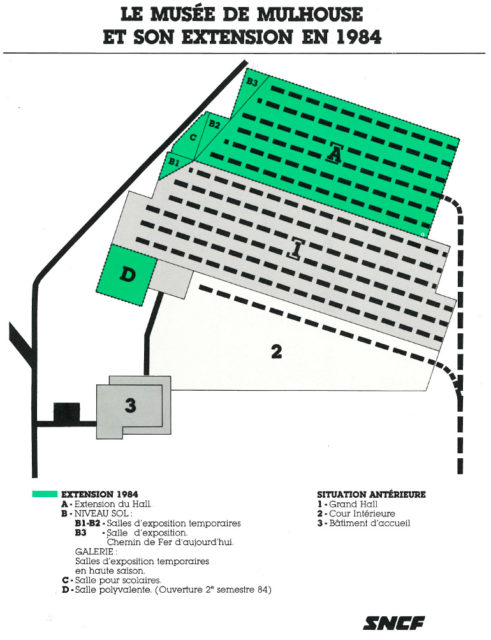
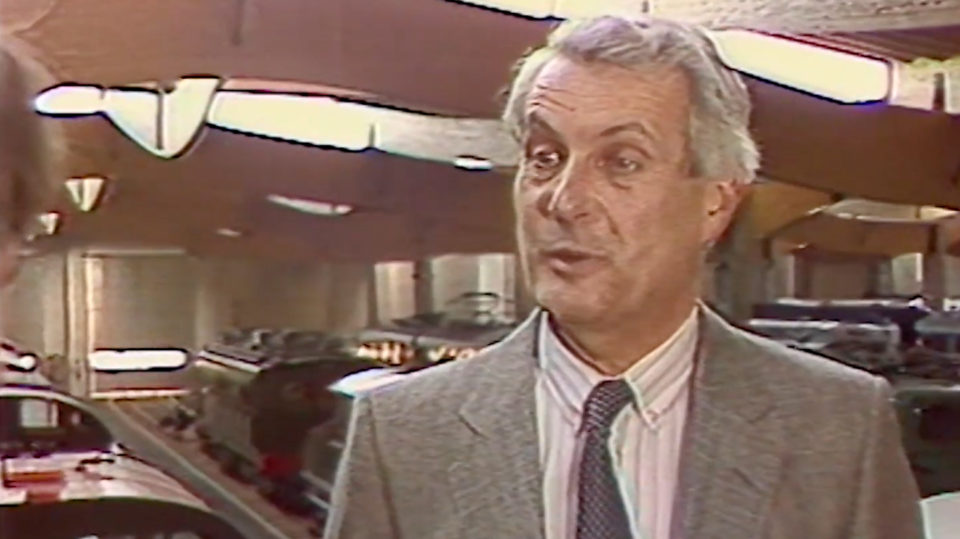
Ciné-rail
While the hall dedicated to rolling stock was significantly extended, gifts of archives, works of art and small objects kept flowing in. At the same time, visitors were to be offered an ever renewed experience. That was how the creation of a cultural dome was proposed. The structure built in 1987 was connected to the offices by a covered corridor, and was comparable to the Geode, inaugurated in the Cité des Sciences in Paris in 1985. This ring-shaped building was a true architectural feat, characterised by its cupola made up of 32 pieces prefabricated by the contractor Savonitto.
Under its domed roof, a screening room was installed, marking the birth of the Ciné-rail. This panoramic cinema was the third Omnimax theatre in France, with 99 seats, and was intended mainly for screening documentaries. Hydro and Images de Hollande were among the catalogue of short films shown between 1989 and 1990, offering visitors and cinema buffs of Mulhouse “sensations and images that will take your breath away!”
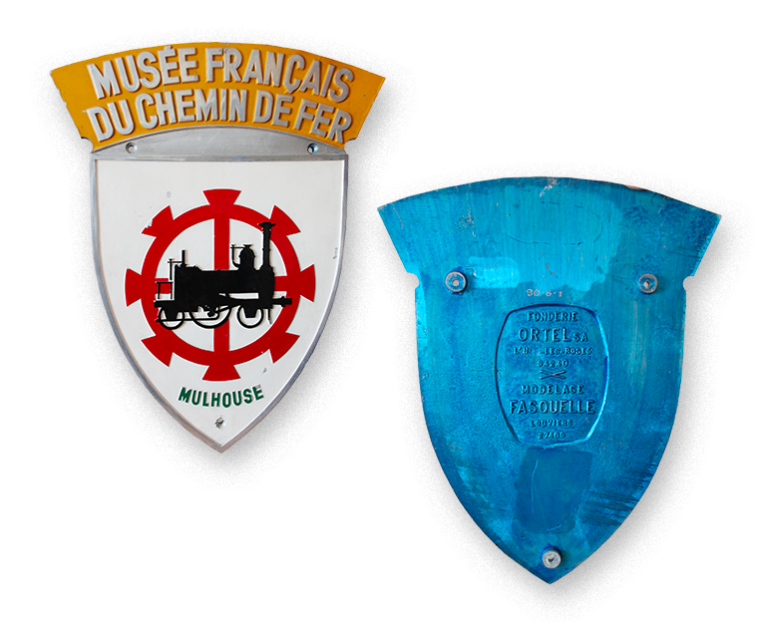
A locomotive
named Museum
In 1989, while Alsace was celebrating the 150th anniversary of the Mulhouse-Thann line, the French Railways Museum passed another symbolic milestone. One year before the departure of Jean-Mathis Horrenberger in 1990, the BB 26006, also known as the “Sybic”, was decorated with a blazon showing the museum. Blazons, which are visible on the liveries of rolling stock when it is inaugurated, generally use the symbols of their sponsor cities. That of the museum thus joined a huge collection, particularly with the arms of Reims, Valenciennes, or Aix-les-Bains.
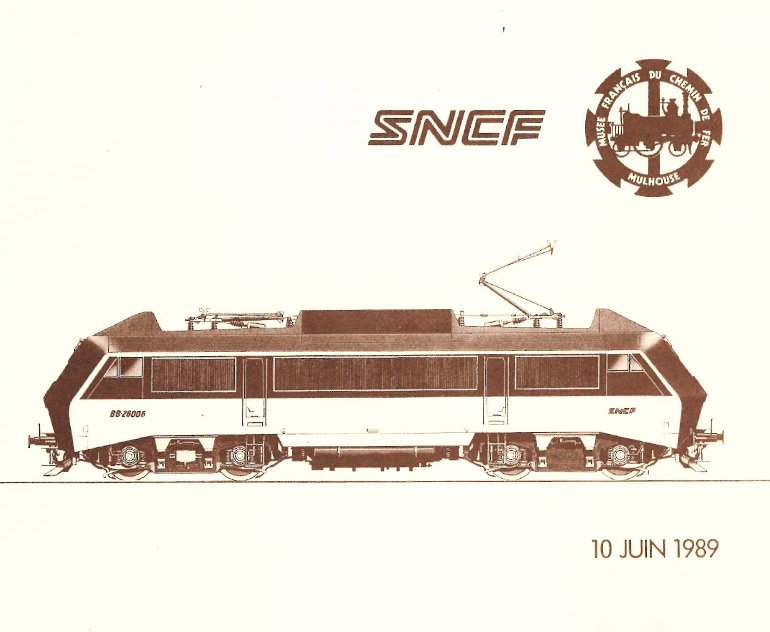
“Voyage in the world
of railways”
From the 1980s, the Railways Museum increased its cultural mediation efforts. Educational elements that were distributed “at large” emerged, such as teaching kits. Three such kits were developed voluntarily in 1983 by a group of teachers and offered to classes in the Mulhouse area. They addressed technical subjects such as the working of steam, and also links between railways and art, literature, geography etc.
Ten years on, in December 1993, a new teaching space was inaugurated in the former Ciné-Rail building: the Express Museum: voyage in the world of railways. This 220 m² space was opened to the public on 15 January 1994, and covered 31 different subjects related to railways. It enabled children, and non-specialist adults, to explore the collections of the museum and gain a better understanding of them. Until it was closed at the end of the 1990s, its passage way included a variety of complementary objects such as animated models, display objects, games, photographs and engravings.
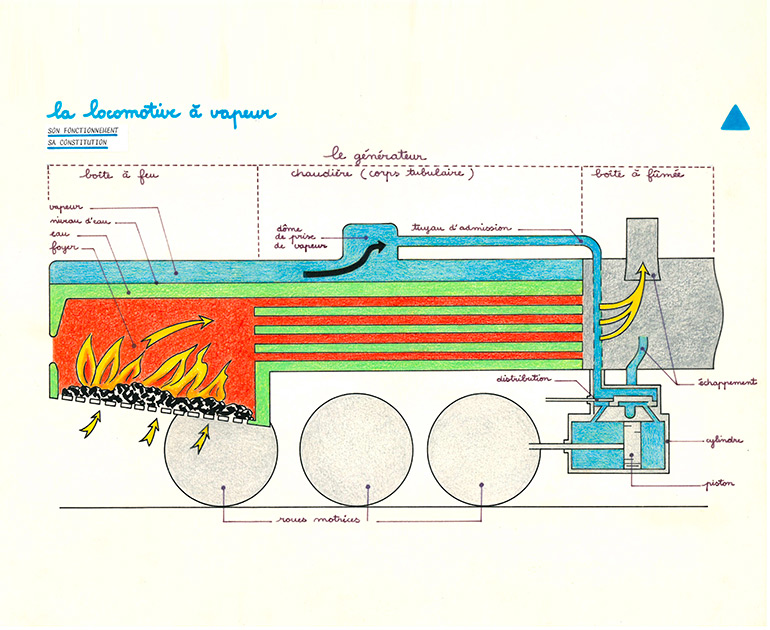
“A coffee, one last ride, and we leave!”
In 1995, a new museum poster claimed that the museum was unforgettable. The great witnesses queried as part of this retrospective agree. With new objects, visitors, personalities and events, each one of them has a vivid memory of their relationship with the institution.
The restaurant was a key element in that experience, with the formal and information exchange fostered by the delicious fare of Alsace.
Located on the first floor of the office building, the restaurant was also the “canteen” for office employees of La Mer Rouge district. And while their parents enjoyed a cup of coffee, children clambered onto the little train which went around the cultural dome.
15 km per hour is a lot when you are little! Especially when the train is in reverse!
“Discover a great museum and its magnificent collection. Come admire our marvels in Alsace, so full of surprises. Mulhouse is not so far away from you.”
– Slogan of an advertising poster published in 1995
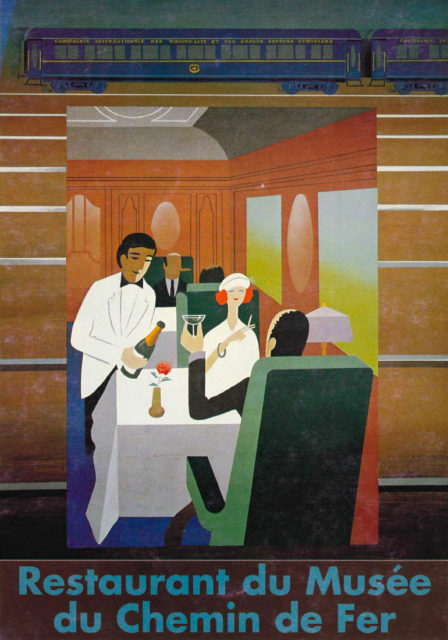
Mulhouse, capital of technical museums
On 4 December 1993, l’Alsace bore the title “Museums without borders are here!” This initiative of Mulhouse, forerunner of the present-day MMSA (Musées Mulhouse Sud Alsace), consisted in forming an organisation aimed at “boosting the museum potential of Mulhouse”. The Fine Arts Museum (1864), the History Museum (1868) the Fabric Printing Museum (1955), the Railways Museum (1971), the National Automobile Museum – Schlumpf collection (1982), the Wallpaper Museum (1983) and Electropolis (1992) together form a rare multidisciplinary collection. Common programming and communication have enabled them to turn Mulhouse into a capital of technical museums.
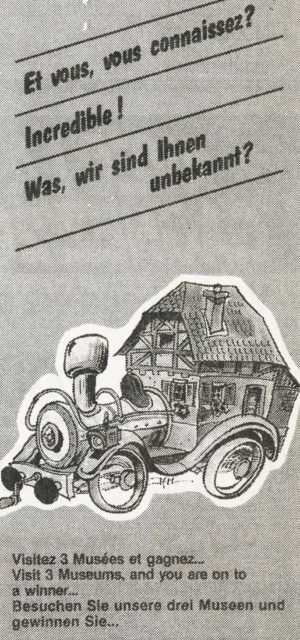
Work of 1995 and storage at the musem
In 1994, the storage agreement between SNCF and the museum association was signed. The document restated the link between the two bodies through the collection. A year later, in 1995, a new storage building was inaugurated. The 10,000 m² area was funded by the regional directorate for cultural affairs, the region, the department and the city of Mulhouse. In 2002, the collection of the organisation secured the Museum of France appellation. Over 30 years after the first discussions between André Malraux and Michel Doerr in 1969 and 20 years after the visit in 1982 from the director of museums of France, Mr Landais, the approval restated the importance of technical museums. Stations, through the great exhibition organised at the Pompidou centre in 1978-1979 (Le Temps des gares), and the opening of the Orsay Museum in the former Parisian station in 1986, themselves became the subject of museums or settings of museums.
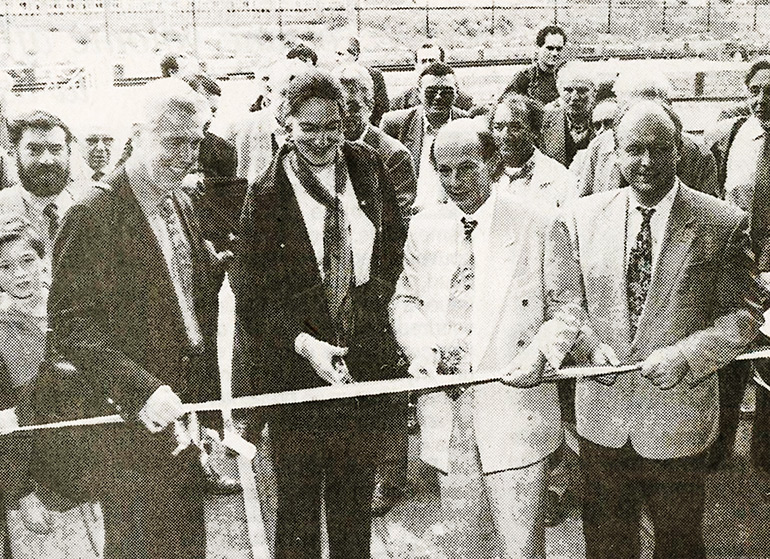
25th anniversary
of the Museum
In 1996, the city of Mulhouse and SNCF celebrated their silver wedding anniversary. For their 25th anniversary, they organised exhibitions on cinema, railway occupations, international model train exhibitions organised by RAMCAS and above all, a visit to the Alstom factory in a steam train thanks to AMEEF (Mulhouse association of railways studies and trips). The invitation cards informed the visitors that one vintage train may hide another. That was because the Museum was not the only one celebrating a silver jubilee. The tourist train of the Doller valley was also marking a quarter century of its existence. Offering steam journeys on the section between Cernay and Sentheim, the tourist railway was also responsible for restoring rolling stock listed as historical monuments. The availability of a ticket combined with admission to the museum in the early 2000s now enabled visitors to enter the life of a locomotive, from workshops to the museum.
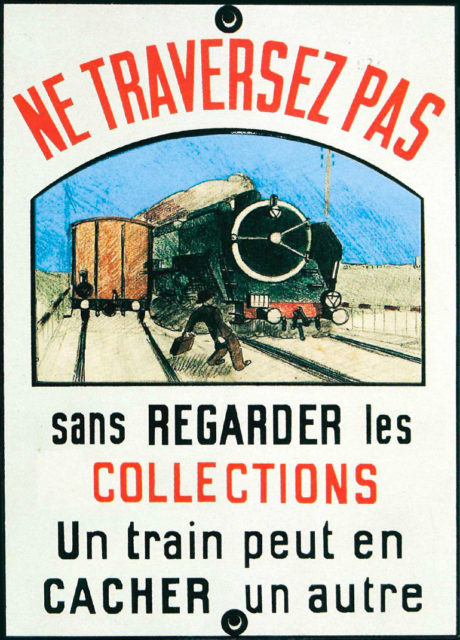
The museum
as a film set
This virtual retrospective could not adequately describe all the concerts and filming sessions organised in the museum in the 1980s. As an inexhaustible source of creation and inspiration, the museum was used as a film set or the venue for shows. La Tête et les jambes in 1977, Marcel Amont in 1980, Musica in 1985 and 1991, Talk Talk in 1986, LUI in 1989, or the protagonists of Sacrée soirée in 1994: all of these left an impression on the museum, where trains often became the main character, instead of merely being a decor.
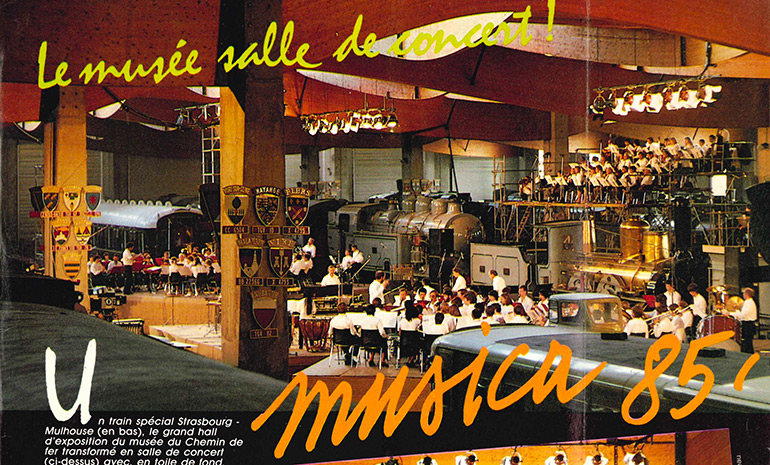
2003 : Train Capital
“The tasks of the organisers of a retrospective exhibition is the most delicate and complicated of all. You need to look for, and find, objects that are of interest; then you must persuade the fortunate owners of those objects to give them to you and lastly, you need to transport these extremely valuable pieces.”
– Maurice Bixio, Introduction to the Note on the Centennial Exhibition on Means of Transport, 1901
In 2002, the museum was in a state of high agitation. Some rolling stock was getting ready to leave its Vosges valley for the streets of Paris. This major event, which was widely filmed, commented and photographed, was called “Train Capital”. From 17 May to 15 June 2003, the Buddicom, the Crampton, the BB 9004, the PR2 and the ambulance carriage were displayed on the Champs-Elysées to an enchanted public. The event organised by SNCF in partnership with Bombardier, Alstom and Siemens turned out to be a Titanesque enterprise. From Mulhouse to Paris, its organisation required many months of preparation and the support of the army, particularly for convoys travelling by road. This open-air exhibition, which put the SNCF collection on show, also created a sense of nostalgia. More than a century after the Universal Exposition of 1900, the words of Maurice Bixio still echo between the service roads of the most beautiful avenue in the world.
From the French Railways Museum to the Cité du Train
In the early 2000s, the French Railways Museum began preparing for change. While ten pieces of rolling stock were on display in Paris, work began in Mulhouse. François Seigneur (1942-2019), the architect selected, proposed a themed renewal of the museum.
While the original building A would be retained, buildings B and C give way to a large and colourful hall: the Show Tour. The move was mainly aimed at remedying decreasing attendance and rejuvenating the image of the museum. At the same time, the firm Culture Espace, which was already in charge of managing the automobile museum in Mulhouse, was appointed as the manager.
A new era began: that of the Cité du Train.
